Teaching Argumentation and Persuasion: 6 Engaging Activities Beyond the Argumentative Essay
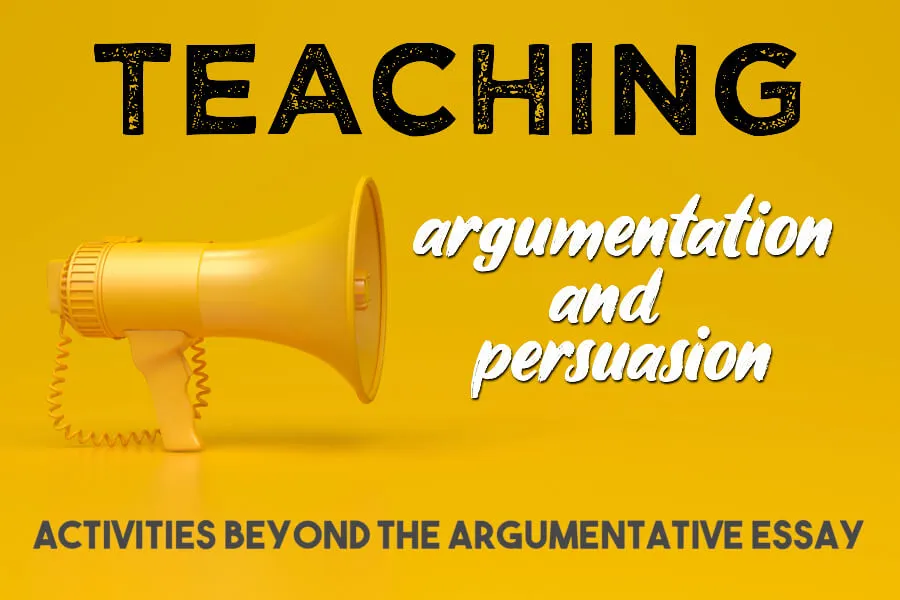
There are many engaging activities to use when teaching argumentation and persuasion beyond the classic essay. While the argumentative essay can certainly be effective, try something new with one of these 6 engaging activities. Your students will be excited and eager to apply argumentation and persuasion in the classroom and beyond.
When it comes to teaching argumentation and persuasion, I’m like a kid on Christmas morning. I’m eager, excited, and full of energy. Yet, over the years, I’ve found that my students don’t always meet me with the same enthusiasm. Instead, they roll their figurative eyes at the thought of writing yet another essay.
I had to do something to save my favorite holiday– I mean unit– of the year.
I’ve spent more hours than I’d like to admit, wracking my brain for activities that would make teaching argumentation and persuasion, dare I say, fun! But the time and effort paid off. When I started implementing activities beyond the argumentative essays, my students were engaged and active participants. It was a win-win.
Lucky for you, I’ve done the work (and put in the time) so you don’t have to. Instead, simply keep reading to uncover some of my secret weapons for teaching argumentation and persuasion. The following activities can be used instead of or in conjunction with the classic argumentative essay. It’s totally up to you and what will best suit your students’ needs. Regardless, you don’t have to spend the hours brainstorming from square one. You can thank me later. In the meantime, read on, my teacher friends!

Laying the Foundation for Teaching Argumentation and Persuasion
Before jumping into one of the activities below, you need to set your students up for success. Therefore, be sure to teach the essential concepts for effective argumentation and persuasion. Afterall, both argumentation and persuasion are cornerstone communication skills in the 21st century.
So, not only do you want to do these topics justice for the sake of your classroom. But, they’re also some of the most transferable skills your students will use in the real world.
Note: if you’re just looking for the activities, no problem! Keep scrolling– I promise they’re there.
Understanding the Difference Between Argumentation and Persuasion
While these two topics are often taught together, it’s important for students to know that they aren’t exactly synonyms. Instead, you could argue (see what I did there) these two concepts act as compliments to one another. In many cases, persuasion can strengthen an argument, and vice versa. But again, they’re not exactly the same when it comes to speaking or writing. (However, I find it useful to remind students of one of the most important aspects they do share: there has to be at least two sides.) You can clarify the major differences between the two by looking at the main goal for each type of writing or speech:
- The goal of argumentative writing is to get the audience to acknowledge your stance on a topic. Moreover, a strong argument shows the reader your viewpoint is valid and deserves consideration. Therefore, argumentative writing is heavily rooted in logic and facts and addressed counterclaims.
- Goal of persuasive writing is to get the audience to agree with you and your stance on a particular topic or viewpoint. While logic most certainly strengthens persuasion, there is also a heavy emphasis on emotional elements as well.
The truth is, the two are often used hand in hand in the real world with everything from marketing and public service campaigns to politics and law. And, in most cases, persuasive writing is more personal and passionate for students. Therefore, I strive to teach the two together to increase student engagement and real word application. Talk about a dream duo for students and teachers alike!
Rhetoric and Rhetorical Appeals
I absolutely love comparing persuasion and argumentation to art. Why? Because it’s a true craft. Do I explain it that way to my students? Abso-freakin-lutely. Why? Because they need to understand that presenting a sound and persuasive argument is a skill. That these writing and speaking skills take time and effort to develop.
Enter: Rhetoric. I always begin this unit by defining argumentation, persuasion, and rhetoric, explaining how the latter literally means the art of persuasion. Then, I introduce the three main rhetorical appeals (shout out Aristotle). Rather than simply giving the students the definitions of ethos, pathos, and logos, I begin by asking questions to help reveal the definitions. Here are some of the questions I use– and that you can most certainly steal for your own classroom:
- To introduce ethos , I ask, “Who would you trust to give advice about toothpaste? Why?”
- To introduce logos , I might ask, “If you wanted to learn how to build a successful business, what is the benefit of a successful entrepreneur giving you step-by-step guidance?”
- To introduce pathos , I ask, “Think about a time where you got emotional during a commercial, song, or movie. What was it that made you so emotional?”
The Power of Words
Once students have an understanding of these essential definitions, it’s time to move on to a more abstract, yet highly significant, concept: the power of words. This is where I introduce the importance (and power) of diction. This is the perfect time to explain how words impact reader/audience experience.
One of the simplest examples to make a case for this claim is asking students to analyze the difference between the terms house and home. I’ve never had a class not come to the conclusion that a house is a structure and place of living, where a home is a place filled with love.
To round out the discussion on why and how words have an impact on the audience, introduce connotation and denotation. Spending a handful of minutes explaining the emotional meaning behind words (connotation) can be a game changer. It reminds students that there is, in fact, emotional power in the words we use. To drive the point home, you can ask them to compare times when they were upset vs. angry vs. furious.
A Fun and Engaging Warm-Up Activity for Teaching Argumentation and Persuasion
What tween or teen doesn’t like arguing with adults? (Trust me. They’re far and few between.) In other words, students will eat this activity up. Rather than focusing on deep and heavy topics that require a great deal of research and unpacking, this activity is a lighthearted warm-up. The goal is to get students to start thinking about what goes into a sound and persuasive argument.
- Arguing with “Adults”
Working independently or in small groups, students will pick a “silly” or lighthearted topic. Encourage them to think of things they’d like to convince their parents, teachers, or other adults. Since these topics are light hearted and often come from a place of passion, students will have no problem coming up with reasons why their curfew should be extended by an hour or two or why homework should be abolished. They’re excited to argue why their parents should buy them a car or why a puppy is a must-have addition to their family.
Next, allow students five minutes to choose a topic and brainstorm their argument. Then, give them 10-20 minutes to write their argument. (The timing of this activity is flexible, so you can adjust it based on the structure of your class.) After they write out their argument, it’s time to share– and let the discussion unfold. As each student (or group) shares their argument, have fun playing devil’s advocate. Challenge them to push their arguments and reasoning further.
While you might want to guide the students through the discussion, let them really come to terms with the idea of what makes a sound and persuasive argument. And if you really want to play up the fun? Challenge the other students to play that role! Have your students in the audience play the role of the adults to whom the argument is targeted. This will challenge students to find holes in the arguments, brainstorming ways to make an argument even stronger. Additionally, it challenges them to think about the importance of audience perspective , looking beyond their own interests, blind spots, and biases. The end result? Develop a list of student generated “check-points” for an argument that is both powerful and persuasive.
Engaging Activities for Teaching Argumentation and Persuasion
Watching TV. Driving down the highway. Scrolling through social media. The art of argumentation and persuasion are everywhere . So, why not bring some of those real-life examples to your classroom? Because the truth is, persuasion and argumentation comes in all shapes and sizes. Therefore, it might be time to look beyond the traditional argumentative essay. And with these activities, you can.
An oldie but a goodie. In fact, discussing teaching argumentation and persuasion wouldn’t feel right without some sort of debate. So, to begin this student-centered activity, select (or have students choose) a topic to argue. This can be a murder or crime– and you can even have fun with historical topics like the Salem witch trials if it’s around Halloween or you’re reading The Crucible . Alternatively, you can root your debate in an ethical dilemma or an essential question. Generally speaking, you can look toward real life events or literature for inspiration. You can even head to your state bar association website for mock trial resources and cases– like these from the state of NH . As long as there is evidence to be found and a case to make, you should be good to go.
Before really diving into the mock trial, spend time reviewing the basics of the justice system and trials. Then, once you choose your topic, divide students into teams of prosecution and defense. Once the teams are determined, students can dive into researching and crafting their arguments. However, be sure to emphasize the need for evidence based claims while also discussing the power of persuasion in the courtroom. (There are plenty of video clips you can show and analyze to see these two elements in action.) Each group, both the prosecution and defense, are responsible for crafting an opening statement, a claim, a rebuttal, and a closing statement. For smaller classes, you can serve as the judge and jury. For larger classes, you can run several trials, letting the other groups act as the jury if they’re not presenting. Either way, students will be far more eager to win the jury over with their evidence than they are to write a paper.
There’s no better way for students to show off their new persuasive skills and knowledge of ethos, logos, and pathos than to craft their own arguments. And a mock trial allows them to do so in a way other than the classic essay. But with a verdict on the line, there’s a lot at stake. Therefore, this activity amps up eager participation.
Mock Trial Teacher Tip. Mock trials make debating more exciting– especially if you really play up the trial theme. (Have an old graduation gown? Use it as the judge’s robe! A wig? Yes please! A gavel? A must.) So, grab your gavel and give this engaging activity a try!
- Students Do Shark Tank
This activity brings the worlds of business, marketing, and advertisements into the conversation. Talk about real world connection! Most older students will be familiar with this show. However, it’s always fun to show a clip for an episode or two just in case. Plus. Who doesn’t love watching videos in class? (Teachers and students alike.) Shark Tank is all about the pitch. So, have fun replicating this idea in your classroom! And instead of presenting to the likes of Mark Cuban, students will present to you . If you’re able, try getting a few other guest sharks on the “show”.
Before diving into the project, in addition to watching a few clips of the show, take some time to analyze the world of advertising. Encourage students to find connections between argumentative and persuasive writing and real-life commercials, social media campaigns, and print advertisements. Then, put students in small groups and together they will create their own product. Alternatively, you can have them pick an existing product they’re passionate about. Then, the fun begins.
Using their new knowledge of persuasive language techniques and argumentation, students must convince the sharks to invest in their product! For a fun twist that gets everyone involved, let the audience in on the investments. Print out a set amount of “money” for each student. After all the presentations, allow them to “invest” in their favorite products. As for the presentations themselves, I like to require a visual advertisement– like a poster– and a written component– like an elevator pitch. Students can then display their visuals as they give their speech. Later, students can view all of the visuals as they decide where to “invest” their money.
Shark Tank Teacher Tip. Looking to beef up the argumentative writing side of things? You can have students submit a short research-based argumentative paper that supports the need for their product. Regardless of the specifics, students will be eager to dive into this activity with such real world application.
- Speech Remix
From Abraham Lincoln’s “The Gettysburg Address” and Martin Luther King Jr.’s “I Have a Dream,” history has its fair share of powerful speeches. And they’re great examples of argumentation and persuasion as well. So, begin this activity by analyzing a mentor text as a class. Then, turn it over to the students to showcase their knowledge on their own.
Have students choose a historical speech (you can refer to this bank of speeches here ) to analyze. They can turn in annotations or a short response analyzing the rhetoric of their chosen speech. Here’s the twist. After analyzing the speech, they then use it as a mentor text, implementing its sentence structure, tone and rhetorical techniques as they write their own speech. This is where student choice really kicks up a notch. Allow students to choose a topic, cause, or issue they feel passionate about. However, I always recommend having a list of potential topics on hand for students who need a little more guidance.
Additionally, it might be useful to encourage a backwards design approach. Have students select their topic first, and then find a speech that is a good match. For example, a social justice issue might pair well with Martin Luther King Jr.’s “I Have a Dream” speech. However, be sure students choosing unique and more modern topics are not dissuaded if they can’t find the perfect match. Regardless, in the end, this activity pays homage to great speeches of the past while allowing students to take ownership as they apply the argumentative and persuasive techniques to modern day.
Speech Remix Teacher Tip. Why limit yourself to the four walls of your classroom? This activity is a perfect opportunity for cross-curricular collaboration. Consider reaching out to the history teachers and focus your class study on a speech that lines up with the social studies curriculum. This will allow students to have a more in depth background knowledge, giving them more context for the speaker’s rhetorical approach. Similarly, a speech of this caliber might be less intimidating if they understand the context, allowing them to really focus on the rhetorical approach.
- #Influencer
In the age of social media, companies make a pretty penny using influencer campaigns. And it’s really quite fitting. Afterall, argumentation and persuasion is all about influence . So, to kick off this activity, spend some time looking at social media ads and influencer accounts. Be sure to analyze everything from photos to captions to hashtags.
After looking at real word examples, it’s time for students to take on the role of an “influencer” – they can be themselves or create an influencer persona. The next step is for them to choose which product of service they are “fit” to promote and, ideally, sell. Students should pick something they have experience with or knowledge about, from video games to make-up. Then, have students write a letter to the “company” (aka you) to convince them that they are capable of being an influencer. This is where they really need to tap into ethos. They should clearly explain why they are a reputable source and should be trusted to sell “your” product. If they’ve convinced you, then they can sign a “contract” (aka the assignment requirements) that outlines the agreement.
Here’s where the fun and creativity happens. While you can determine the specific requirements, students should create a portfolio of campaign materials to promote their chosen product. This is where you can determine how in depth or brief you want the assignment to be. The portfolio can include artifacts like a series of social media posts, youtube videos or scripts, an email funnel, or even blog posts– or a portfolio combining various types of artifacts.
#Influencer Teacher Tip. If you’re looking to amp up the requirements and turn this into a unit-long assignment or a full blown summative assessment, you totally can. Consider adjusting the assignment to be a multigenre project of sorts. Present students with a list and overview of various genres they can include as part of their project. Then, let them select the ones they wish to include in their multigenre portfolio.
- PSA – The Passion Project
The name alone screams engagement, right? Even better, this activity is engaging. Instead of assigning a list of overused (and sometimes outdated) argumentative prompts, let students take the reins by choosing a topic that matters to them . So, after teaching your students about rhetorical appeals, the appropriate use of persuasion, and the basics of argumentative writing, let students showcase their newfound skills with the PSA Passion Project. In this project, rather than simply writing an essay for the sake of getting grades, students are diving into an issue of their choice in hopes of raising awareness.
Begin by having students select a social or environmental issue that is important to them. These can range from animal testing in the beauty industry to the impact of social media on mental health. In other words, there’s a wide variety of topics out there, so your students are bound to find something that matters to them. Then, they must plan, develop, and create a public service announcement campaign around the issue. This is where you can really drive home the idea of call to action with persuasion. The challenge with the PSA assignment is crafting an argument that is applicable and persuasive for a mass audience. Afterall, when it comes to wide-spread change, there is power in numbers. (This activity can serve as its own unit or work in conjunction with the study of classic essays like “On The Duty of Civil Disobedience” by Thoreau or “A Letter From Birmingham County Jail” by MLK Jr..
This activity has plenty of room for creativity and student choice. However, that doesn’t mean you have to give up a writing component. Instead, require students to complete a minimum of two items: a written piece and a visual or media element. The writing pieces can range from a more traditional argumentative essay to back up their media component. Alternatively, they can write a speech, persuasive letter, or educational blog post. Then, for the media components, they can create a poster, a video, a social media post, or an infographic– just to name a few. Now, if you’re really looking to diversify the elements of this project, consider turning the PSA Passion Project into a full blown multigenre project!
PSA Passion Project Teacher Tip. Despite your best efforts, some students will claim they can’t find a topic they’re passionate about. (Teenagers.) That’s why I always come prepared with a list of topics students can choose from. Even students eager to choose their own topic might like to see a list for inspiration. Save yourself some time by giving them ideas from this list of engaging argumentative writing prompts!
A Final Note on the Art of Teaching Argumentation and Persuasion
Remember, I’m not saying traditional essays are bad. But I think it’s worth looking beyond the traditions and asking ourselves, how can we make this better ? Better for the students. More reflective of and applicable to the world we live in. If there’s some fun to be had along the way, so be it! (In fact, I encourage it!)
So, as you go one to try any one (or all!) of these activities in your classroom, feel free to make adjustments as needed. And If you’re still looking for a more traditional essay to be your summative assessment, that’s A-OK too! In fact, the activities above can be shortened and adjusted to serve as a mini-lesson or formative assignments before writing a more traditional argumentative essay.
The bottom line is this…
Ever since I changed my approach to teaching argumentation and persuasion, it’s become something my students and I enjoy together . Imagine that!
1 thought on “Teaching Argumentation and Persuasion: 6 Engaging Activities Beyond the Argumentative Essay”
awesome advice and ideas. My semester just got a lot better!!!
Leave a Reply Cancel reply
Your email address will not be published. Required fields are marked *
Save my name, email, and website in this browser for the next time I comment.
Persuasion Map
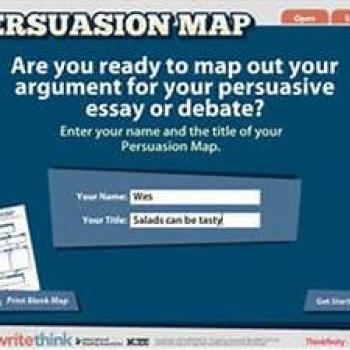
About this Interactive
Related resources.
The Persuasion Map is an interactive graphic organizer that enables students to map out their arguments for a persuasive essay or debate. Students begin by determining their goal or thesis. They then identify three reasons to support their argument, and three facts or examples to validate each reason. The map graphic in the upper right-hand corner allows students to move around the map, instead of having to work in a linear fashion. The finished map can be saved, e-mailed, or printed.
- Student Interactives
- Strategy Guides
- Calendar Activities
- Lesson Plans
The Essay Map is an interactive graphic organizer that enables students to organize and outline their ideas for an informational, definitional, or descriptive essay.
This Strategy Guide describes the processes involved in composing and producing audio files that are published online as podcasts.
This strategy guide explains the writing process and offers practical methods for applying it in your classroom to help students become proficient writers.
Through a classroom game and resource handouts, students learn about the techniques used in persuasive oral arguments and apply them to independent persuasive writing activities.
Students analyze rhetorical strategies in online editorials, building knowledge of strategies and awareness of local and national issues. This lesson teaches students connections between subject, writer, and audience and how rhetorical strategies are used in everyday writing.
Students examine books, selected from the American Library Association Challenged/Banned Books list, and write persuasive pieces expressing their views about what should be done with the books at their school.
Students will research a local issue, and then write letters to two different audiences, asking readers to take a related action or adopt a specific position on the issue.
- Print this resource
Explore Resources by Grade
- Kindergarten K
Engaging Strategies for Teaching Persuasion, Argument, and Debate
Year after year, I love teaching persuasion. I love persuading my students that persuasion is a life skill worth learning. (Because isn’t all teaching just persuading kids to listen and learn?!) Luckily, with the right mix of ethos, pathos, and logos, this is usually an easy sell to my audience of adolescents.
After all, teens love to argue…with their peers, their parents, and *gasp* their teachers. They have plenty of practice with real-life persuasion, whether it’s convincing their parents to stay out past their curfew or proposing just one extra day to work on that project. And they’re always dying to debate: which sports team is superior, why they deserve more freedom, and what’s wrong with school, society, and this world! If you’ve ever taught teenagers, you know that they have no shortage of opinions. So suffice it to say: your students are already arguers.
The challenge, of course, is helping students channel their opinions and energy into structured, academic argumentation. To do this, you’ll need high-engagement activities that match your students’ energy… not the ancient 5-paragraph persuasive essay over a subject on that random list of 100 debatable topics you found online. If we want to move students to a more sophisticated level of debate, we need to offer them student-centered, authentic, and relevant tasks to practice their persuasion.
Ready to ditch the 5-paragraph persuasive essay and engage your students in meaningful persuasion? Here are dozen different strategies for your ELA classroom.
MOCK TRIALS
Want to teach students how important it is to support your argument with evidence (and what happens when you don’t)? Ready to watch your class eagerly annotate a text and cite said evidence *without* complaints?

I wasn’t sure my students would ever see citing evidence as more than a chore until I dressed up as “Judge G,” borrowed a gavel, and facilitated my first mock trial!
A mock trial is the perfect way to practice persuasion and argumentation because it’s student-centered, inherently engaging, and 100% authentic. You’ll watch students become intrigued, take ownership, and get competitive real quick! Because students know they’ll be arguing in front of a jury of their peers, the standards become strategy. Citing textual evidence is no longer a chore, but a competition! The stakes are higher than a grade from the teacher because the real prize is bragging rights.
To structure a mock trial in your ELA classroom, you’ll need a murder, crime, ethical dilemma, or essential question. In other words: literature! From there, you’ll want to divide students into teams of prosecution, defense, and jury. After that, students will get to work within their groups. In my classroom, this is what it looks like:
The prosecution and defense teams prepare evidence-based claims and rebuttals. Each student is responsible for a section, whether that’s the opening, a claim, a rebuttal, or the closing. Meanwhile, the jury works together to create a rubric and anticipate the arguments they may hear during the trial.
You can read more about mock trials HERE or find everything you need to facilitate a virtual or in-person trial HERE.
RHETORICAL BAR GRAPHS
Bar graphs in ELA? Oh yes you can! Getting a gold star from her math cohorts, Ashley Bible at Building Book Love has her students create rhetorical bar graphs to analyze persuasion.

This digital or tactile strategy is simple yet highly effective! All you do is assign each appeal a color before taking students on a color-coded text hunt. (In her rhetoric lesson plan , Ashley uses: Pink Pathos, Light Blue Logos, and Emerald Green Ethos).
Once students have each appeal coded, they arrange the rhetorical devices into a bar graph and analyze which appeal the speaker relies most heavily on and how they could make their argument stronger. This visualization technique always generates important insights about the topic at hand!
From analyzing speeches in Julius Caesar , to recognizing propaganda in Animal Farm , to tackling social justice in Dolly Parton’s America , this strategy is a gift that keeps on giving! Tag her @BuildingBookLove if you give it a try!
ANALYZING COMMERCIALS & ADVERTISEMENTS
To help students identify persuasive appeals and techniques in action, Shana Ramin from Hello, Teacher Lady suggests deconstructing commercials and advertisements.

When teaching in person, Shana enjoys facilitating this type of analysis with the tried-and-true “chalk talk” approach. After gathering a series of printed advertisements, Shana glues each one in the center of large chart paper and places them at various points around the room. Students rotate through each station with a small group, annotating each ad silently with an eye for purpose, audience, tone, etc. At the end of the activity, students return to their original stations and share out their final observations with the class.
To mimic this activity in a hybrid or digital environment, Shana recommends using Jamboard, an easy-to-use, digital whiteboard app by Google. The setup process is pretty much the same, but replace the printed ads with image screenshots and the white chart paper with a digital Jamboard slide. Students can then use the sticky note and marker features on Jamboard to annotate the images in breakout rooms.
Click here to learn more about the collaborative features of Google Jamboard .
ARGUMENT OLYMPICS
The Argument Olympics are Emily Aierstok’s favorite way to teach middle and high school students evidence based writing. Emily, from Read it. Write it. Learn it. , uses an Olympic theme to deconstruct arguments, write outlines, and compete in the “strongest evidence” game complete with gold medals! Kids LOVE it and quickly understand the qualities of strong evidence in their writing.

To really create an Olympic games feel, Emily creates a very simple (and free!) classroom transformation. She strings red, yellow, and blue streamers around the room, plays the Olympic theme song from YouTube, and prints gold medals to hand out for gold-medal-level deconstructed essays, strongest outlines, and strongest evidence.
Next, Emily introduces the “Olympic events.” For example, the first Olympic Event she introduces to students is The Strongest Evidence Competition. Students are given two sides of an argument topic and asked to find three pieces of evidence to support each argument. After finding their evidence, students are tasked with identifying the evidence that’s the strongest. Students become so motivated to find the strongest evidence, and they’re practicing essential analysis skills. The quality of evidence students find is amazing.
You can read more about implementing the Argument Olympics in your classroom here .
SILENT DISCUSSIONS
Jenna, @DrJennaCopper , loves using silent discussions for students to debate the impact of articles and artifacts. The rules are simple: students are only allowed to write. This type of stipulation helps students really think about their responses since they can’t talk.

Here’s how it works:
- Choose an artifact or article.
- Get a big piece of poster board or a big paper and paste the article or artifact in the center.
- Tell students to read the article and then, discuss with the stipulation that they are only allowed to write. No talking! It helps if students color-code their writing.
- As students “discuss,” walk around the room and comment (in writing, of course!) to generate more debate.
- When the discussion is over, place the posters on the walls and give students a chance to walk around and view.
- Facilitate a talking classroom discussion to discuss insights and observations.
That’s it! Not only will your students be highly engaged, but you’ll also enjoy the few short minutes of precious silence!
As a bonus, this activity works great for a remote lesson as well. Just paste your article or artifact in a Google Doc and share it so they all have editing access. They can complete their silent discussions right in the document.
STUDYING FAMOUS SPEECHES
Lauralee from the Language Arts Classroom frequently uses famous speeches and commercials to teach persuasion. By bringing in authentic examples to the classroom, this strategy offers history and media lessons, too.

When students realize that they see strategies every day in social media, on their phones, and within stores, they engage and are excited to apply those concepts to their public speaking endeavors.
For instance, students can study the techniques in a Susan B. Anthony speech and then apply those techniques to their own speeches. Teachers can even pair her speech with a narrative speech assignment. Students can then employ sentence structure, tone, and logos into their speeches. Although ELA teachers often use persuasive techniques during public speaking lessons, many of the same activities work well with argumentative writing.
NAILED IT! & SHARK TANK
Staci Lamb from The Engaging Station loves switching up her creative lessons on ethos, logos, and pathos every year. She has had students watch Shark Tank and sell their own products, but last year, she was inspired to try something new by making a connection to the Netflix show Nailed It .

Right before winter break, she went to Walmart to buy graham crackers, icing, candies, and more. Dollar Tree also had a great selection of inexpensive candy. Students had to create a gingerbread masterpiece and then use ethos, logos, and pathos to justify why their house was the best. The kids had a lot of fun, and it was an engaging activity to end the calendar year.
You can see this idea and more with free resources on her blog post Creative Ways to Teach Persuasive Appeals .
REAL WORLD TOPICS + CHOICE
Today, students have access to more information than ever at their fingertips. Tanesha from Tanesha B. Forman leverages real world topics – that students want to debate in the classroom – with argu mentative writing lessons. Choice is the bedrock of Tanesha’s approach to lit eracy and she offers students a choice on a topic (e.g. should college athletes be paid?), and tells them the format (e.g. speech, letter).

Next, students research their topic. Tanesha always warns students to think about their position, but be open to changing based on what the research from credible sources reveals. Students spend a day or two gathering information for their writing assignment. For students who need support with this, Tanesha has 3-4 sources readily available. Once students have their evidence, they enter the writing process that Tanesha creates mini-lessons aligned to their needs and they present their work. Throughout the year, Tanesha encourages students to share topics they want to “argue” and she repeats the cycle.
THE ELEVATOR PITCH
No matter what you’re reading or learning about, adding a persuasive pitch to “sell” an idea, is a great way to include elements of persuasion beyond a persuasive unit.

For example, if students are creating something to aid a character , rather than just explain it, challenge your students to create a short elevator pitch! It can even be used with literary analysis by asking a question such as: Which character is the most (insert character trait here)? Staci from Donut Lovin’ Teacher finds that when students have to pitch their ideas, they really begin to reflect on their work and what makes it great, and also where it can grow.
Staci likes starting with a graphic organizer to get students thinking and then begins layering in mini-lessons that consider the audience, point of view, tone, and rhetorical appeals, depending on how much time you have. Students can then begin crafting their pitch on a guided template and practice saying it aloud. If you’re able to incorporate this multiple times throughout the year, your students will really grow confidence in their speaking skills, too!
MUSICAL DEBATES
Middle and high school students can at times feel intimidated by debate and persuasion. That’s why Melissa from Reading and Writing Haven recommends a mini debate activity that engages all students and makes debate relaxed and approachable.

Musical debates amplify the energy, creativity, and social interaction in the physical classroom and online. By adding a simple twist of music, it lightens the mood and provides natural brain breaks so students have time to collect their thoughts.
Here are Melissa’s simple steps for using this debate-style discussion strategy in your classroom:
- Give students a thought-provoking or humorous prompt.
- Play music as students think, research, jot notes, and (if possible) walk around the room.
- Stop the music and have students get into groups of two or three.
- Students quickly choose roles. Two of the students need to take one of the sides (pro / con or for / against). The third person is a neutral judge who can build on what the speakers say, offer a different perspective, or make connections between ideas.
- After a set amount of time, follow up with a question that digs deeper into the topic or provides another angle. Play music, and allow students to brainstorm again, or take some notes.
- Students then pair up again with different peers.
- After as many rounds as you would like to run, bring the whole class together and use a Jamboard, Mentimeter, or Padlet as a common visual location to share ideas as a whole group.
To make this strategy work online, you can use breakout rooms to group students together randomly.
Of course, you can run the same type of mini debates without the music. And, that’s fun, too! But, for students, the music adds energy and connectedness. Plus, it reduces the anxiety for students who are more reluctant to engage in debates.
Musical debates create a warm, relaxed environment conducive to critical thinking and dialogue. And, students have multiple short opportunities to hone their skills and hear a variety of perspectives. Melissa wrote about engaging variations, prompts for musical discussions, and how to prepare students on her blog. Click here to read the post .
PSA PASSION PROJECTS
One way that Christina, The Daring English Teacher , likes to incorporate persuasion, argument, and debate into the classroom is by assigning a PSA Passion Project to students.

After learning about rhetorical appeals and argument writing , Christina assigns her students a PSA Passion Project. Her students select an important social issue and create a public service announcement campaign to raise awareness for their chosen issue.
The public service campaign usually includes a variety of items. To place students in charge of their learning, they choose several products to produce from a list of items: a speech, a persuasive letter, a graphic essay , a poster, an infographic, an informational video, a narrative video, a social media campaign, and more. It is important to make sure that students choose at least two items, and that their combination includes a writing component and a media literacy component.
To make the class project more fun, no two students can choose the same topic. To share their projects with the class, Christina likes to use Padlet.
ANALYZING MUSIC
Amanda from Mud and Ink Teaching likes to head the Disney direction when it comes to learning the ins and outs of argumentation.

So many great Disney songs offer an argumentative core, and their popularity and familiarity help build engagement with students. Take “Under the Sea” for example: Sebastian has quite the task in front of him. Somehow, he must convince an uninterested Ariel to curb her curiosity about the human world and appreciate her home under ‘de water. Reversely, Moana sings of the importance of heeding the call to the ocean in “How Far I’ll Go” as she debates within herself how far she is actually willing to go. Each of these speakers has an important message to impart, and these are things that students are comfortable wrestling with.
Amanda’s favorite song to teach, however, is the well-loved classic “Be Our Guest” from Beauty and the Beast . In this lesson that she outlines in her blog post and provides a free Google Slide lesson download , Amanda teaches students the importance of understanding the rhetorical situation (the rhetorical triangle) as well as the devices and techniques that the speaker uses to communicate his message. Through practice and discussion with familiar texts and characters, students begin to embrace the fundamental ideas of argumentation.
I hope this post helps you make persuasion more engaging, authentic, and student-centered! What are your other favorite activities to teach persuasion? Let me know in the comments!
If you like any of these ideas, don’t forget to pin them! 🙂
Share this:
- Click to share on Twitter (Opens in new window)
- Click to share on Facebook (Opens in new window)
You may also enjoy:
10 activities for teaching the hunger games, 10 activities for any dystopian novel, how to use the “what do you …, leave a reply cancel reply.
Your email address will not be published. Required fields are marked *
Notify me of follow-up comments by email.
Notify me of new posts by email.
Check out my most popular posts!
August 5, 2018: why i don’t review the syllabus on the first day …, december 16, 2018: 10 ideas for planning engaging novel units, december 11, 2017: comfort in the classroom with flexible seating, july 21, 2018: teaching american literature: my units & favorite lessons.
- Share full article
Advertisement
Supported by
Writing curriculum
Argumentative Writing Unit
Writing prompts, lesson plans, webinars, mentor texts and a culminating contest, all to inspire your students to tell us what matters to them.

By The Learning Network
Unit Overview
On our site, we’ve been offering teenagers ways to tell the world what they think for over 20 years. Our student writing prompt forums encourage them to weigh in on current events and issues daily, while our contests have offered an annual outlet since 2014 for formalizing those opinions into evidence-based essays.
In this unit, we’re bringing together all the resources we’ve developed along the way to help students figure out what they want to say, and how to say it effectively.
Here is what this unit offers, but we would love to hear from both teachers and students if there is more we could include. Let us know in the comments, or by writing to [email protected].
Start With Our Prompts for Argumentative Writing
How young is too young to use social media? Should students get mental health days off from school? Is $1 billion too much money for any one person to have?
These are the kinds of questions we ask every day on our site. In 2017 we published a list of 401 Prompts for Argumentative Writing categorized to provoke thinking on aspects of contemporary life from social media to sports, politics, gender issues and school. In 2021, we followed it up with 300 Questions and Images to Inspire Argument Writing , which catalogs all our argument-focused Student Opinion prompts since then, plus our more accessible Picture Prompts.
Teachers tell us their students love looking at these lists, both to inspire their own writing and to find links to reliable sources about the issues that intrigue them. In fact, every year we get many contest submissions that grow directly out of these questions. Several, like this one , have even gone on to win.
But even if you’re not participating in our contest, you might use these prompts to invite the kind of casual, low-stakes writing that can help your students build skills — in developing their voices, making claims and backing them up with solid reasoning and evidence.
And, if your students respond to our most recent prompts by posting comments on our site, they can also practice making arguments for an authentic audience of fellow students from around the world. Each week we choose our favorites to honor in our Current Events Conversation column .
Find Lesson Plans on Every Aspect of Argument Writing
Over the years, we’ve published quite a few lesson plans to support our annual argument writing contests — so many, in fact, that we finally rounded them all up into one easy list.
In “ 10 Ways to Teach Argument-Writing With The New York Times ,” you’ll find resources for:
Exploring the role of a newspaper opinion section
Understanding the difference between fact and opinion
Analyzing the use of rhetorical strategies like ethos, pathos and logos
Working with claims, evidence and counterarguments
Helping students discover the issues that matter to them
Breaking out of the “echo chamber” when researching hot-button issues
Experimenting with visual argument-making
In 2021, we also developed An Argumentative-Writing Unit for Students Doing Remote Learning that can help teenagers guide their own learning.
Teach and Learn With Mentor Texts
You probably already know that you can find arguments to admire — and “writer’s moves” to emulate — all over the Times Opinion section . But have you thought about using the work of our previous Student Editorial Contest winners as mentor texts too?
Here are ways to use both:
Learn from the Op-Ed columnist Nicholas Kristof’s writing process : One edition of our “Annotated by the Author” Mentor Text series is by Mr. Kristof. See what he has to say about the writing challenges he faced in a recent column and how he did the kinds of things students will have to do, too, from fact-checking to fixing grammar errors to balancing storytelling with making a larger point.
Get to know one writer’s rhetorical style : Many teachers use an “adopt a columnist” method, inviting students to focus on the work of one of the Times Opinion columnists to get to know his or her issues and rhetorical style. In 2019, an English teacher in Connecticut wrote for our site about how he does this exercise, in which his students choose from among columnists at The Times, The Washington Post and The Wall Street Journal.
Use the work of teenage winners to help your students identify “writer’s moves” they can borrow: Teachers have told us there is no better way to prepare students to enter our contest than to have them examine the work of previous winners.
On our current site, you can find the essays of the top winners and the runners-up from 2017-202 3. Invite your students to read one and answer the questions we pose in all our Mentor Texts columns : “What do you notice or admire about this piece? What lessons might it have for your writing?” Then, have them borrow one or more of this student’s “writer’s moves” and imitate it in their own work.
We have also published two Learning Network books , one that collects 100 of the best student essays from this contest all in one place, categorized by subjects like “Teenage Life Online,” “Gender and Sexuality” and “Sports and Gaming,” and the other a related teacher’s guide to using them in the classroom.
Here is a roundup of ideas from 17 teachers and students for ways to use these “authentic, powerful and unafraid” student essays in several classroom contexts.
Finally, two new entries in our Annotated by the Author series feature student editorial contest winners from 2020 discussing their work and sharing tips: Ananya Udaygiri on “How Animal Crossing Will Save the World” and Abel John on “Collar the Cat!”
Get Practical Tips From Our Related Videos and Webinars

The video above, “ How to Write an Editorial ,” is only three minutes long, but in it Andy Rosenthal, the former editor of the Times Opinion page, gives students seven great pieces of advice.
Both students and teachers are welcome to watch our popular on-demand 2017 webinar, “ Write to Change the World: Crafting Persuasive Pieces With Help From Nicholas Kristof and the Times Op-Ed Page ,” which includes a wealth of practical tips from Mr. Kristof, as well as from Kabby Hong, a Wisconsin English teacher who works with this contest annually, and his student, Daina Kalnina, whose 2017 essay was one of our top winners that year.
Finally, you can watch our 2021 on-demand webinar, Teaching Argumentative Writing , that focuses on two key steps in the process: finding your argument, and using evidence to support it. You will also get broad overview of how to use our writing prompts and the work of our student winners to help your own students find topics they care about, and craft solid arguments around them. You can also watch an edited version of this webinar below.
Enter Our New Student Open Letter Contest: March 13-April 17, 2024
The culmination of this unit? Our new Open Letter Contest.
An open letter is a published letter of protest or appeal usually addressed to an individual but intended for the general public. Martin Luther King’s Letter From Birmingham Jail , the recent letter signed by over 1,000 tech leaders about the dangers of A.I. and this funny 2020 letter addressed to Harry and Meghan are all examples of this rich tradition.
Just as we did for our long-running Editorial Contest, we invite students to make an argument in 450 words about something that matters to them, and persuade us that we should care, too. But this time, students must address themselves to a specific target audience or recipient, institution or group — one that has the power to make meaningful change.
Whether students choose their parents, teachers, school board members or mayor; a member of Congress; the head of a corporation; or a metonym like “Silicon Valley” or “The Kremlin,” they should ask themselves, What do I care about? Who can make changes, big or small, local or global, to address my issue or problem? What specifically do I want them to understand and do? And how can I write this as an “open letter,” meaningful not just to me and the recipient, but to a general audience?
More information will be published soon. Until then, you can find ideas and inspiration in our related writing unit and via the work of past Editorial winners .
As always, all student work will be read by our staff, volunteers from the Times Opinion section, and/or by educators from around the country. Winners will have their work published on our site and, perhaps, in the print New York Times.
Argument & Thesis Statements
Main navigation, rhetorical mad libs.
In this activity, student groups experiment with different rhetorical appeals and strategies of argumentation (assigned randomly) to write a fake letter to a specific audience.
Rhetorical Analysis Thesis Workshops
These two activities are designed to introduce students to the idea of a thesis statement for a rhetorical analysis essay and provide structured peer feedback on their draft thesis statement.
The Empath, the Sweetheart, and the Skeptic
This innovative modification of a peer response activity asks students to pitch their thesis statements to each other in small groups, with respondents playing the roles of an active listener (empath), a "Sweetheart" (someone who really loves the thesis statement), and then the Skeptic (someone critical of the thesis statement).
Identifying Warrants or Assumptions
This activity is designed for students to work through the warrants and assumptions they may have for their arguments and identify possible gaps at the early stage of the research process. They can use this activity to consolidate the research process and locate useful sources and materials to formulate a coherent argument.
Evolving Your RA Argument
In this workshop, students apply the Evolving Thesis method to their RA pre-write, using the pre-write as a foundation to develop their first working thesis.
Visualizing the Argument
Through creative use of the whiteboard, this activity challenges students to think creatively about their developing research arguments to re-assess what they truly wanted to argue in their upcoming RBA.
The Elevator Pitch
This speaking activity encourages students to focus their argument by asking them to construct a pithy, brief "pitch" that they iteratively revise after delivering.
The Elevator Pitch with Peer Response
This activity helps students continue to develop their focus and argument for their RBAs. It is intended to show students that research is an ongoing process.
Find additional activities here:
Jumbo ‘Spectra’ Worksheets for Narrowing Topics and Locating Positions
Types of Argument
Reaching In to Reach Out to Skeptical Readers
A Step-by-Step Plan for Teaching Argumentative Writing
February 7, 2016
Can't find what you are looking for? Contact Us

Listen to this post as a podcast:
This page contains Amazon Affiliate and Bookshop.org links. When you make a purchase through these links, Cult of Pedagogy gets a small percentage of the sale at no extra cost to you. What’s the difference between Amazon and Bookshop.org?
For seven years, I was a writing teacher. Yes, I was certified to teach the full spectrum of English language arts—literature, grammar and usage, speech, drama, and so on—but my absolute favorite, the thing I loved doing the most, was teaching students how to write.
Most of the material on this site is directed at all teachers. I look for and put together resources that would appeal to any teacher who teaches any subject. That practice will continue for as long as I keep this up. But over the next year or so, I plan to also share more of what I know about teaching students to write. Although I know many of the people who visit here are not strictly English language arts teachers, my hope is that these posts will provide tons of value to those who are, and to those who teach all subjects, including writing.
So let’s begin with argumentative writing, or persuasive writing, as many of us used to call it. This overview will be most helpful to those who are new to teaching writing, or teachers who have not gotten good results with the approach you have taken up to now. I don’t claim to have the definitive answer on how to do this, but the method I share here worked pretty well for me, and it might do the same for you. If you are an experienced English language arts teacher, you probably already have a system for teaching this skill that you like. Then again, I’m always interested in how other people do the things I can already do; maybe you’re curious like that, too.
Before I start, I should note that what I describe in this post is a fairly formulaic style of essay writing. It’s not exactly the 5-paragraph essay, but it definitely builds on that model. I strongly believe students should be shown how to move past those kinds of structures into a style of writing that’s more natural and fitting to the task and audience, but I also think they should start with something that’s pretty clearly organized.
So here’s how I teach argumentative essay writing.
Step 1: Watch How It’s Done
One of the most effective ways to improve student writing is to show them mentor texts, examples of excellent writing within the genre students are about to attempt themselves. Ideally, this writing would come from real publications and not be fabricated by me in order to embody the form I’m looking for. Although most experts on writing instruction employ some kind of mentor text study, the person I learned it from best was Katie Wood Ray in her book Study Driven (links to the book: Bookshop.org | Amazon ).
Since I want the writing to be high quality and the subject matter to be high interest, I might choose pieces like Jessica Lahey’s Students Who Lose Recess Are the Ones Who Need it Most and David Bulley’s School Suspensions Don’t Work .
I would have students read these texts, compare them, and find places where the authors used evidence to back up their assertions. I would ask students which author they feel did the best job of influencing the reader, and what suggestions they would make to improve the writing. I would also ask them to notice things like stories, facts and statistics, and other things the authors use to develop their ideas. Later, as students work on their own pieces, I would likely return to these pieces to show students how to execute certain writing moves.
Step 2: Informal Argument, Freestyle
Although many students might need more practice in writing an effective argument, many of them are excellent at arguing in person. To help them make this connection, I would have them do some informal debate on easy, high-interest topics. An activity like This or That (one of the classroom icebreakers I talked about last year) would be perfect here: I read a statement like “Women have the same opportunities in life as men.” Students who agree with the statement move to one side of the room, and those who disagree move to the other side. Then they take turns explaining why they are standing in that position. This ultimately looks a little bit like a debate, as students from either side tend to defend their position to those on the other side.
Every class of students I have ever had, from middle school to college, has loved loved LOVED this activity. It’s so simple, it gets them out of their seats, and for a unit on argument, it’s an easy way to get them thinking about how the art of argument is something they practice all the time.
Step 3: Informal Argument, Not so Freestyle
Once students have argued without the support of any kind of research or text, I would set up a second debate; this time with more structure and more time to research ahead of time. I would pose a different question, supply students with a few articles that would provide ammunition for either side, then give them time to read the articles and find the evidence they need.
Next, we’d have a Philosophical Chairs debate (learn about this in my discussion strategies post), which is very similar to “This or That,” except students use textual evidence to back up their points, and there are a few more rules. Here they are still doing verbal argument, but the experience should make them more likely to appreciate the value of evidence when trying to persuade.
Before leaving this step, I would have students transfer their thoughts from the discussion they just had into something that looks like the opening paragraph of a written argument: A statement of their point of view, plus three reasons to support that point of view. This lays the groundwork for what’s to come.
Step 4: Introduction of the Performance Assessment
Next I would show students their major assignment, the performance assessment that they will work on for the next few weeks. What does this look like? It’s generally a written prompt that describes the task, plus the rubric I will use to score their final product.
Anytime I give students a major writing assignment, I let them see these documents very early on. In my experience, I’ve found that students appreciate having a clear picture of what’s expected of them when beginning a writing assignment. At this time, I also show them a model of a piece of writing that meets the requirements of the assignment. Unlike the mentor texts we read on day 1, this sample would be something teacher-created (or an excellent student model from a previous year) to fit the parameters of the assignment.
Step 5: Building the Base
Before letting students loose to start working on their essays, I make sure they have a solid plan for writing. I would devote at least one more class period to having students consider their topic for the essay, drafting a thesis statement, and planning the main points of their essay in a graphic organizer.
I would also begin writing my own essay on a different topic. This has been my number one strategy for teaching students how to become better writers. Using a document camera or overhead projector, I start from scratch, thinking out loud and scribbling down my thoughts as they come. When students see how messy the process can be, it becomes less intimidating for them. They begin to understand how to take the thoughts that are stirring around in your head and turn them into something that makes sense in writing.
For some students, this early stage might take a few more days, and that’s fine: I would rather spend more time getting it right at the pre-writing stage than have a student go off willy-nilly, draft a full essay, then realize they need to start over. Meanwhile, students who have their plans in order will be allowed to move on to the next step.
Step 6: Writer’s Workshop
The next seven to ten days would be spent in writer’s workshop, where I would start class with a mini-lesson about a particular aspect of craft. I would show them how to choose credible, relevant evidence, how to skillfully weave evidence into an argument, how to consider the needs of an audience, and how to correctly cite sources. Once each mini-lesson was done, I would then give students the rest of the period to work independently on their writing. During this time, I would move around the room, helping students solve problems and offering feedback on whatever part of the piece they are working on. I would encourage students to share their work with peers and give feedback at all stages of the writing process.
If I wanted to make the unit even more student-centered, I would provide the mini-lessons in written or video format and let students work through them at their own pace, without me teaching them. (To learn more about this approach, read this post on self-paced learning ).
As students begin to complete their essays, the mini-lessons would focus more on matters of style and usage. I almost never bother talking about spelling, punctuation, grammar, or usage until students have a draft that’s pretty close to done. Only then do we start fixing the smaller mistakes.
Step 7: Final Assessment
Finally, the finished essays are handed in for a grade. At this point, I’m pretty familiar with each student’s writing and have given them verbal (and sometimes written) feedback throughout the unit; that’s why I make the writer’s workshop phase last so long. I don’t really want students handing in work until they are pretty sure they’ve met the requirements to the best of their ability. I also don’t necessarily see “final copies” as final; if a student hands in an essay that’s still really lacking in some key areas, I will arrange to have that student revise it and resubmit for a higher grade.
So that’s it. If you haven’t had a lot of success teaching students to write persuasively, and if the approach outlined here is different from what you’ve been doing, give it a try. And let’s keep talking: Use the comments section below to share your techniques or ask questions about the most effective ways to teach argumentative writing.
Want this unit ready-made?
If you’re a writing teacher in grades 7-12 and you’d like a classroom-ready unit like the one described above, including mini-lessons, sample essays, and a library of high-interest online articles to use for gathering evidence, take a look at my Argumentative Writing unit. Just click on the image below and you’ll be taken to a page where you can read more and see a detailed preview of what’s included.
What to Read Next

Categories: Instruction , Podcast
Tags: English language arts , Grades 6-8 , Grades 9-12 , teaching strategies
58 Comments
This is useful information. In teaching persuasive speaking/writing I have found Monroe’s Motivated sequence very useful and productive. It is a classic model that immediately gives a solid structure for students.
Thanks for the recommendation, Bill. I will have to look into that! Here’s a link to more information on Monroe’s Motivated sequence, for anyone who wants to learn more: https://www.mindtools.com/pages/article/MonroeMotivatedSequence.htm
What other sites do you recommend for teacher use on providing effective organizational structure in argumentative writing? As a K-12 Curriculum Director, I find that when teachers connect with and understand the organizational structure, they are more effective in their teaching/delivery.
Hey Jessica, in addition to the steps outlined here, you might want to check out Jenn’s post on graphic organizers . Graphic organizers are a great tool that you can use in any phase of a lesson. Using them as a prewrite can help students visualize the argument and organize their thoughts. There’s a link in that post to the Graphic Organizer Multi-Pack that Jenn has for sale on her Teachers Pay Teachers site, which includes two versions of a graphic organizer you can use specifically for argument organization. Otherwise, if there’s something else you had in mind, let us know and we can help you out. Thanks!
Dear Jennifer Gonzalez,
You are generous with your gift of lighting the path… I hardly ever write (never before) , but I must today… THANK YOU… THANK YOU….THANK YOU… mostly for reading your great teachings… So your valuable teachings will even be easy to benefit all the smart people facing challenge of having to deal with adhd…
I am not a teacher… but forever a student…someone who studied English as 2nd language, with a science degree & adhd…
You truly are making a difference in our World…
Thanks so much, Rita! I know Jenn will appreciate this — I’ll be sure to share with her!
Love it! Its simple and very fruitful . I can feel how dedicated you are! Thanks alot Jen
Great examples of resources that students would find interesting. I enjoyed reading your article. I’ve bookmarked it for future reference. Thanks!
You’re welcome, Sheryl!
Students need to be writing all the time about a broad range of topics, but I love the focus here on argumentative writing because if you choose the model writing texts correctly, you can really get the kids engaged in the process and in how they can use this writing in real-world situations!
I agree, Laura. I think an occasional tight focus on one genre can help them grow leaps and bounds in the skills specific to that type of writing. Later, in less structured situations, they can then call on those skills when that kind of thinking is required.
This is really helpful! I used it today and put the recess article in a Google Doc and had the kids identify anecdotal, statistic, and ‘other’ types of evidence by highlighting them in three different colors. It worked well! Tomorrow we’ll discuss which of the different types of evidence are most convincing and why.
Love that, Shanna! Thanks for sharing that extra layer.
Greetings Ms. Gonzales. I was wondering if you had any ideas to help students develop the cons/against side of their argument within their writing? Please advise. Thanks.
Hi Michael,
Considering audience and counterarguments are an important part of the argumentative writing process. In the Argumentative Writing unit Jenn includes specific mini-lessons that teach kids how, when and where to include opposing views in their writing. In the meantime, here’s a video that might also be helpful.
Hi, Thank you very much for sharing your ideas. I want to share also the ideas in the article ‘Already Experts: Showing Students How Much They Know about Writing and Reading Arguments’ by Angela Petit and Edna Soto…they explain a really nice activity to introduce argumentative writing. I have applied it many times and my students not only love it but also display a very clear pattern as the results in the activity are quite similar every time. I hope you like it.
Lorena Perez
I’d like to thank you you for this excellence resource. It’s a wonderful addition to the informative content that Jennifer has shared.
What do you use for a prize?
I looked at the unit, and it looks and sounds great. The description says there are 4 topics. Can you tell me the topics before I purchase? We start argument in 5th grade, and I want to make sure the topics are different from those they’ve done the last 5 years before purchasing. Thanks!
Hi Carrie! If you go to the product page on TPT and open up the preview, you’ll see the four topics on the 4th page in more detail, but here they are: Social Networking in School (should social media sites be blocked in school?), Cell Phones in Class, Junk Food in School, and Single-Sex Education (i.e., genders separated). Does that help?
I teach 6th grade English in a single gendered (all-girls) class. We just finished an argument piece but I will definitely cycle back your ideas when we revisit argumentation. Thanks for the fabulous resources!
Glad to hear it, Madelyn!
I’m not a writing teacher and honestly haven’t been taught on how to teach writing. I’m a history teacher. I read this and found it helpful but have questions. First I noticed that amount of time dedicated to the task in terms of days. My questions are how long is a class period? I have my students for about 45 minutes. I also saw you mentioned in the part about self-paced learning that mini-lessons could be written or video format. I love these ideas. Any thoughts on how to do this with almost no technology in the room and low readers to non-readers? I’m trying to figure out how to balance teaching a content class while also teaching the common core skills. Thank you for any consideration to my questions.
Hey Jones, To me, a class period is anywhere from 45 minutes to an hour; definitely varies from school to school. As for the question about doing self-paced with very little tech? I think binders with written mini-lessons could work well, as well as a single computer station or tablet hooked up to a class set of videos. Obviously you’d need to be more diligent about rotating students in and out of these stations, but it’s an option at least. You might also give students access to the videos through computers in other locations at school (like the library) and give them passes to watch. The thing about self-paced learning, as you may have seen in the self-paced post , is that if students need extra teacher support (as you might find with low readers or non-readers), they would spend more one-on-one time with the teacher, while the higher-level students would be permitted to move more quickly on their own. Does that help?
My primary goal for next semester is to increase academic discussion and make connections from discussion to writing, so I love how you launch this unit with lessons like Philosophical Chairs. I am curious, however, what is the benefit of the informal argument before the not-so-informal argument? My students often struggle to listen to one another, so I’m wondering if I should start with the more formal, structured version. Or, am I overthinking the management? Thanks so much for input.
Yikes! So sorry your question slipped through, and we’re just now getting to this, Sarah. The main advantage of having kids first engage in informal debate is that it helps them get into an argumentative mindset and begin to appreciate the value of using research to support their claims. If you’ve purchased the unit, you can read more about this in the Overview.
My 6th graders are progressing through their argumentative essay. I’m providing mini lessons along the way that target where most students are in their essay. Your suggestions will be used. I’ve chosen to keep most writing in class and was happy to read that you scheduled a lot of class time for the writing. Students need to feel comfortable knowing that writing is a craft and needs to evolve over time. I think more will get done in class and it is especially important for the struggling writers to have peers and the teacher around while they write. Something that I had students do that they liked was to have them sit in like-topic groups to create a shared document where they curated information that MIGHT be helpful along the way. By the end of the essay, all will use a fantastic add-on called GradeProof which helps to eliminate most of the basic and silly errors that 6th graders make.
Debbi! I LOVE the idea of a shared, curated collection of resources! That is absolutely fantastic! Are you using a Google Doc for this? Other curation tools you might consider are Padlet and Elink .
thanks v much for all this information
Love this! What do you take as grades in the meantime? Throughout this 2 week stretch?
Ideally, you wouldn’t need to take grades at all, waiting until the final paper is done to give one grade. If your school requires more frequent grades, you could assign small point values for getting the incremental steps done: So in Step 3 (when students have to write a paragraph stating their point of view) you could take points for that. During the writer’s workshop phase, you might give points for completion of a rough draft and participation points for peer review (ideally, they’d get some kind of feedback on the quality of feedback they give to one another). Another option would be to just give a small, holistic grade for each week based on the overall integrity of their work–are they staying on task? Making small improvements to their writing each day? Taking advantage of the resources? If students are working diligently through the process, that should be enough. But again, the assessment (grades) should really come from that final written product, and if everyone is doing what they’re supposed to be doing during the workshop phase, most students should have pretty good scores on that final product. Does that help?
Awesome Step 2! Teaching mostly teenagers in Northern Australia I find students’ verbal arguments are much more finely honed than their written work.
To assist with “building the base” I’ve always found sentence starters an essential entry point for struggling students. We have started using the ‘PEARL’ method for analytical and persuasive writing.
If it helps here a free scaffold for the method:
https://www.teacherspayteachers.com/Product/FREE-Paragraph-Scaffold-PEEL-to-PEARL-3370676
Thanks again,
Thank you for sharing this additional resource! It’s excellent!
I’ve been scouring the interwebs looking for some real advice on how I can help my struggling 9th grader write better. I can write. Since it comes naturally for me, I have a hard time breaking it down into such tiny steps that he can begin to feel less overwhelmed. I LOVE the pre-writing ideas here. My son is a fabulous arguer. I need to help him use those powers for the good of his writing skills. Do you have a suggestion on what I else I can be using for my homeschooled son? Or what you may have that could work well for home use?
Hi Melinda,
You might be interested in taking a look at Jenn’s Argumentative Writing unit which she mentions at the end of the post . Hope this helps!
Mam it would be good if you could post some steps of different writing and some samples as well so it can be useful for the students.
Hi Aalia! My name is Holly, and I work as a Customer Experience Manager for Cult of Pedagogy. It just so happens that in the near future, Jenn is going to release a narrative writing unit, so keep an eye out for that! As far as samples, the argumentative writing unit has example essays included, and I’m sure the narrative unit will as well. But, to find the examples, you have to purchase the unit from Teachers Pay Teachers.
I just want to say that this helped me tremendously in teaching argument to 8th Graders this past school year, which is a huge concept on their state testing in April. I felt like they were very prepared, and they really enjoyed the verbal part of it, too! I have already implemented these methods into my unit plan for argument for my 11th grade class this year. Thank you so much for posting all of these things! : )
-Josee` Vaughn
I’m so glad to hear it, Josee!!
Love your blog! It is one of the best ones.
I am petrified of writing. I am teaching grade 8 in September and would love some suggestions as I start planning for the year. Thanks!
This is genius! I can’t wait to get started tomorrow teaching argument. It’s always something that I have struggled with, and I’ve been teaching for 18 years. I have a class of 31 students, mostly boys, several with IEPs. The self-paced mini-lessons will help tremendously.
So glad you liked it, Britney!
My students will begin the journey into persuasion and argument next week and your post cemented much of my thinking around how to facilitate the journey towards effective, enthusiastic argumentative writing.
I use your rubrics often to outline task expectations for my students and the feedback from them is how useful breaking every task into steps can be as they are learning new concepts.
Additionally, we made the leap into blogging as a grade at https://mrsdsroadrunners.edublogs.org/2019/01/04/your-future/ It feels much like trying to learn to change a tire while the car is speeding down the highway. Reading your posts over the past years was a factor in embracing the authentic audience. Thank You! Trish
I love reading and listening to your always helpful tips, tricks, and advice! I was wondering if you had any thoughts on creative and engaging ways to have students share their persuasive writing? My 6th students are just finishing up our persuasive writing where we read the book “Oh, Rats” by Albert Marrin and used the information gathered to craft a persuasive piece to either eliminate or protect rats and other than just reading their pieces to one another, I have been trying to think of more creative ways to share. I thought about having a debate but (un)fortunately all my kids are so sweet and are on the same side of the argument – Protect the Rats! Any ideas?
Hi Kiley! Thanks for the positive feedback! So glad to hear that you are finding value in Cult of Pedagogy! Here are a few suggestions that you may be interested in trying with your students:
-A gallery walk: Students could do this virtually if their writing is stored online or hard copies of their writing. Here are some different ways that you could use gallery walks: Enliven Class Discussions With Gallery Walks
-Students could give each other feedback using a tech tool like Flipgrid . You could assign students to small groups or give them accountability partners. In Flipgrid, you could have students sharing back and forth about their writing and their opinions.
I hope this helps!
I love the idea of mentor texts for all of these reading and writing concepts. I saw a great one on Twitter with one text and it demonstrated 5-6 reasons to start a paragraph, all in two pages of a book! Is there a location that would have suggestions/lists of mentor texts for these areas? Paragraphs, sentences, voice, persuasive writing, expository writing, etc. It seems like we could share this info, save each other some work, and curate a great collection of mentor text for English Language Arts teachers. Maybe it already exists?
Hi Maureen,
Here are some great resources that you may find helpful:
Craft Lessons Second Edition: Teaching Writing K-8 Write Like This: Teaching Real-World Writing Through Modeling and Mentor Texts and Mentor Texts, 2nd edition: Teaching Writing Through Children’s Literature, K-6
Thanks so much! I’ll definitely look into these.
I love the steps for planning an argumentative essay writing. When we return from Christmas break, we will begin starting a unit on argumentative writing. I will definitely use the steps. I especially love Step #2. As a 6th grade teacher, my students love to argue. This would set the stage of what argumentative essay involves. Thanks for sharing.
So glad to hear this, Gwen. Thanks for letting us know!
Great orientation, dear Jennifer. The step-by-step carefully planned pedagogical perspectives have surely added in the information repository of many.
Hi Jennifer,
I hope you are well. I apologise for the incorrect spelling in the previous post.
Thank you very much for introducing this effective instruction for teaching argumentative writing. I am the first year PhD student at Newcastle University, UK. My PhD research project aims to investigate teaching argumentative writing to Chinese university students. I am interested in the Argumentative Writing unit you have designed and would like to buy it. I would like to see the preview of this book before deciding to purchase it. I clicked on the image BUT the font of the preview is so small and cannot see the content clearly. I am wondering whether it could be possible for you to email me a detailed preview of what’s included. I would highly appreciate if you could help me with this.
Thank you very much in advance. Looking forward to your reply.
Take care and all the very best, Chang
Hi Chang! Jenn’s Argumentative Writing Unit is actually a teaching unit geared toward grades 7-12 with lessons, activities, etc. If you click here click here to view the actual product, you can click on the green ‘View Preview’ button to see a pretty detailed preview of what’s offered. Once you open the preview, there is the option to zoom in so you can see what the actual pages of the unit are like. I hope this helps!
Great Content!
Another teacher showed me one of your posts, and now I’ve read a dozen of them. With teaching students to argue, have you ever used the “What’s going on in this picture?” https://www.nytimes.com/column/learning-whats-going-on-in-this-picture?module=inline I used it last year and thought it was a non-threatening way to introduce learners to using evidence to be persuasive since there was no text.
I used to do something like this to help kids learn how to make inferences. Hadn’t thought of it from a persuasive standpoint. Interesting.
this is a very interesting topic, thanks!
Hi! I’m a teacher too! I was looking for inspiration and I found your article and thought you might find this online free tool interesting that helps make all students participate meaningfully and engage in a topic. https://www.kialo-edu.com/
This tool is great for student collaboration and to teach argumentative writing in an innovative way. I hope this helps!
Leave a Reply
Your email address will not be published.

5 Top Persuasive Writing Lesson Plans for Students and Teachers
The purpose of any persuasive writing text is to persuade the reader of a particular point of view or to take a specific course of action. Persuasive texts come in many different forms, including, but not limited to, essays, editorials, letters, advertisements, and reviews. While persuasive texts come in many shapes and sizes, they all share standard features.
Persuasive texts employ a wide variety of different rhetorical strategies and techniques to achieve their ends. For example, they’ll use emotive language and rhetorical questions. Images are sometimes used to entice or appeal to the reader or viewer.
Advertising is one key form of persuasive writing . It makes vigorous use of all the tools in the persuasive writing toolbox as it strives to sell goods or services to the reader.
In this article, you’ll learn how to take your students from reluctant salespersons to master marketers in a lightning-fast five days.
Students will first learn how the various persuasive strategies work before incorporating them into their advertisements. We have comprehensive guides to persuasive writing and advertisements you should explore also.
So, let’s get started!

Persuasive Writing Lesson Plan 1: Identify the Key Features of Adverts
Before your students will be able to produce their own well-written advertisements, they’ll need to be well-versed in all the tricks up the skilful salesperson’s sleeves.
One of the most productive ways for students to do this is through reverse engineering.
Organize your students into small groups or pairs and distribute print advertisements gleaned from various sources such as magazines, newspapers, and posters. You could also show projections of some sample advertisements projected onto the whiteboard to facilitate this exercise.
Now, ask the students to examine the advertisements and answer the following question:
What techniques do the advertisers use to get our attention?
Challenge the students to go beyond the pretty obvious features of advertisements, e.g. branding, slogans, and testimonials, to also look at more subtle techniques such as the use and interplay of images and various other effects created by language choices and figurative devices.
When the students have finished their discussions, give them feedback as a whole class and use their responses to compile a master list of the various features they have identified.
Some features suggested by the class might include:
- Emotive language
- Exaggeration
- Appealing adjectives
- Powerful verbs
- Strong adverbs
- Contact details
- Alliteration
- Rhetorical questions
- Testimonials
Once you have compiled a master list of persuasive strategies and techniques used in advertising, these can handily be turned into checklists that the students can use when producing their own advertisements later.
Persuasive Writing Lesson Plan 2: Analyze an Advert
Now, the students have a solid understanding of the different features of advertisements and a checklist to work from; it’s time for them to analyze an advert in more detail.
Not only will this prove a valuable exercise to help prepare your students for producing their own advertisements later in the week, but it will also serve as an excellent task to improve your students’ media literacy skills. It may even help to innoculate them from media manipulation in the future.
To get started on their advertisement analysis, they’ll need to source a suitable advertisement to look at in detail.
Older and higher-ability students may be fit to make their own choices regarding which advertisement to analyze. If this is the case, perhaps they can choose an advert for a product they like or a product or service in a category that interests them greatly.
Allowing your students some say in the ads they analyze will help fuel their interest and enthusiasm when creating their own advertisements later.
However, it might be best to choose a sample advertisement for younger students and those of lower ability – or at least offer a pre-vetted, limited choice. They will most likely have enough to contend with already!
When students have a suitable advertisement to hand, please encourage them to use their checklist from yesterday’s lesson to explore how the ad works. The students should then write a paragraph identifying the various techniques used in the advertisement and their effect.
Challenge the students to write another paragraph or two, considering what makes the advertisement work – or not, as the case may be. Ask them to consider where the advertisement could be improved. Could the slogan be catchier? How about the logo? Does it convey the brand’s identity appropriately? Are the images used in the advertisement optimal?
When the students have finished their paragraphs, they can display their advert and their analysis and share their thoughts with the class.
Persuasive Writing Lesson Plan 3: Plan an Advertisement
At this stage, your students should have a good understanding of many of the main features of advertisements and had plenty of opportunities to see examples of these in action. Now it’s time for them to begin to plan for writing their own advertisements. Here are some areas for your students to think about when starting the planning process.
The Purpose and Audience
Like any other writing type, students will need to identify both the purpose and the audience for their advertisements bef ore putting pen to paper.
The purpose of any advertisement is to sell goods or services. Precisely what goods or services are being sold is the first question that needs to be answered.
Students might like to focus on the goods or services advertised in the adverts they’ve been exploring over the previous two days. Or, if they prefer, they might like to choose something new entirely.
Once they’ve chosen what they’re selling, students will need to identify who they will sell it to. Scattershot advertisements that attempt to sell to everyone often end up selling to no one.
One effective way to help focus an advert is to define a ‘buyer persona’ first. This is a profile of the hypothetical buyer who the ad will target.
Students can consider the following characteristics to help them develop their buyer’s persona:
- Education level
- Marital status
- Likes/Dislikes
- Who they trust
- What they read/watch
The Brand Name
The next stage is for the student to decide on a name for their company. This should usually be something relatively short and memorable, and appealing to the target audience.
Generally, the student will need to come up with at least four or five ideas first. They can then choose the best.
It can be a helpful practice for the student to look at the brand names for companies selling similar goods and services. A little internet research will be beneficial here.
Now it’s time for students to jot down ideas for their brand’s slogan. Slogans are short and punchy phrases that help make brands more memorable for customers.
Slogans often employ literary devices such as alliteration, puns, or rhyme. They don’t always have to be the most meaningful things in the world; it’s more important that they’re memorable. Think Nike’s Just to Do It or McDonald’s I’m Lovin’ It – not the most meaning-rich phrases in the world but instantly recognizable!
The Body Copy
This part of the advertisement will contain the bulk of the writing. It’s where the students will get to use the various techniques and strategies they’ve explored in the previous activities.
Despite containing most of the ad’s text, advertising copy is usually concise and to the point. Student’s should strive to get the main points across in the fewest words possible. Nothing turns readers off faster than impenetrable walls of text.
To help organize the text, students may use bullet points and subheadings. They should be sure to include any specific information or specifications that they want the reader to know about the product or service.
The language chosen should also be appropriate for speaking to the audience that they have defined earlier.
The Call to Action
The Call to Action – commonly referred to as the CTA , usually comes at the end of an advertisement.
The CTA typically comprises a few sentences that invite the reader to take a particular course of action. Normally, to buy the advertised goods or service.
However, not all CTAs focus on getting the reader to make an immediate purchase. Some, for example, aim to get the reader to provide their contact details so they can be sold to later.
Students need to first define what their Call to Action will invite readers to do. They will then need to choose a strong imperative that will call on the reader to take that specific action. Commonly used verbs that urge readers to take action include subscribe, join, buy, etc.
The CTA must be clear and specific; the reader should be in no doubt about what the advertisement is asking them to do.
Often, the CTA will create a sense of urgency by limiting special offers by time.
As part of the planning process, students should use some of their time in today’s session to think about and make some notes on options they might like to include in the final drafts of their Call to Action.
Persuasive Writing Lesson Plan 4: Create the Advertisement
Day 4, already! This is the day students will try to bring all the elements together. They’ll work to complete their advertisements by the end of today’s session.
You may like to have the students collaborating to produce their ads or working individually. Either way, reinforce the importance of attention to detail in their work.
The main focus for persuasive texts of any kind, advertisements included, shouldn’t be length but, instead, it should be on how effectively it persuades the reader to take the desired action.
Students should incorporate their planning from yesterday and refer to their checklists as they create. As precise language is so essential to effective marketing, encourage students to use thesauruses to help them find just the right word for their copy.
When students have had a chance to draft their advertisements, they can then get into small groups and compare their work. This is an opportunity for students to provide each other with constructive criticism.
They can use their checklists as a basis to provide this criticism. Students can then revise their advertisements in light of the advice they’ve received in their groups.
Persuasive Writing Lesson Plan 5: Further Practice in the Art of Persuasion
In the process of comparing their work with each other, with reference to the criteria they’ve worked on earlier in the week, students will no doubt identify areas they are strong in and other areas where they are weaker.
Day 5’s activities should offer students an opportunity to practice those areas identified as needing further work to bring them up to par.
For example, students can practice their persuasion skills by moving their focus from printed ads to other types of marketing endeavours that utilise the arts of persuasion.
Where students struggled to employ literary devices in their advertising copy, they may benefit from creating a radio jingle or radio ad for their product or service. As this type of ad can contain no visual imagery to support, writing a radio jingle or ad will force the student to pay particular attention to verbal imagery, rhyme, alliteration, etc.
If the testimonials used in the first advertisement were unconvincing, perhaps the student will benefit from isolating this strategy to focus exclusively on effective testimonial writing. They should spend some time researching testimonials and how to write them effectively.
For example, testimonials should usually be:
- Short and to the point
- Conversational in tone
- Authentic (use a name, photo, job title, etc.)
- Specific about the benefits
- Directed at overcoming objections.
Once students have a good handle on how these work, they should put their new-found knowledge into practice and get writing as soon as possible.
This research-then-practice model can help the student improve in whatever particular area of persuasion that needs work – as identified in yesterday’s activity.
Getting good at persuasive writing demands our students to develop their knowledge and abilities with a broad range of skills and strategies.
Advertising copy is a highly concentrated form of persuasive writing and, therefore, an excellent means for our students to gain lots of practice in a short space of time.
And, as the saying goes, a good start is half the work, so set your class of creative copywriters on the road to marketing mastery today!
ARTICLES RELATED TO PERSUASIVE WRITING LESSON PLANS

How to Write Perfect Persuasive Essays in 5 Simple Steps

Top 5 Persuasive Writing Techniques for Students

23 Persuasive writing Topics for High School students

How to Write an Advertisement: A Complete Guide for Students and Teachers
ELA Activities and Resources
The Unique Argumentative Writing Group Game That Will Blow Up Your Class

Writing an argumentative essay can be a real challenge for students. Many times students find it difficult to understand how to write an argument, support their claims or craft a rebuttal. ARGUETROPIA , argumentative writing group game , is here to save the day!
Before getting down to writing that argumentative essay , start your students’ journey with ARGUETROPIA . It is a fun real life simulation of an imaginary city with reality inspired problems which the students have to solve in a competitive setting.
ARGUETROPIA is designed to be played with the entire class so no one is left behind. The students sharpen their argumentative and persuasion skills by finding solutions, writing arguments, constructing rebuttals and making motivated decisions.
How do you play it?
The students are split into 4 teams. Three of the teams are responsible for solving the problems presented on the task cards. One team decides which solution is the best for the city. The whole activity is packed with argument, rebuttal and motivation writing, offering a complete experience.

The teams receive an equal number of stars with the number of problem cards they will have to solve. If their solution is not voted by the Voters, they lose a star . If their solution is the voted one, they keep their current number of stars. The winner is the team that has the most stars after all problems are solved.

The game is easy to play and extremely flexible. You can choose from 20 possible problems and can fine tune the activity according to the needs of your students. The pack comes with ideas you can implement to modify the game in various manners.
ARGUETROPIA aids in cognitive and argumentative development in students. It increases the levels of engagement in class and it is an accessible tool for middle school and high school students.
Do you want to give it a go?
Over 200 teachers have already tried this engaging argumentative writing game and have reported amazing results. We gave away for free over 100 game packs and as we closed the promotional session, teachers wrote to us that they want more. So if you want to play ARGUETROPIA with your students in class today, we have a special discounted price only for you, our teacher friend.
Hurry up (because the game packs are selling like hot cakes) and get this engaging argumentative game now for your class!
Click on the picture below to download it from our TPT Store!
If you like it, please leave a quick review so that we know you had lots of fun learning argumentative writing in your class.

Stay in touch with us and get all the great resources you need for your ELA class!
Similar Posts
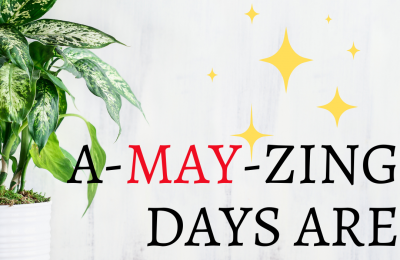
A-MAY-Zing Days Are Ahead!

March Madness in the ELA Classroom: Slam-Dunk Ideas for Engaging Lessons
Leave a reply cancel reply.
Your email address will not be published. Required fields are marked *
Save my name, email, and website in this browser for the next time I comment.
AP ® Lang teachers: looking to help your students improve their rhetorical analysis essays?
Coach Hall Writes
clear, concise rhetorical analysis instruction.
3 Argument Writing Activities my Students Loved!
December 30, 2023 by Beth Hall
As I’ve been prepping for my spring semester, I wanted to share 3 argument writing activities I gave my AP ® Lang students this semester that they genuinely enjoyed.
Argument Writing Activity 1: Teach the Teacher
I love when students write about “niche” concepts in their Q3 argument essays. I find it more interesting and more convincing than some of the more “obvious” topics.
However, I’ve noticed that students need to practice writing about topics of interest. For one, they need to be able to concisely and effectively provide background information so the reader understands the significance of the evidence.
Last year, I had a couple students select the same evidence for multiple prompts. They simply adapted the example to the prompt. While this apporach might not work for every student or all prompts, I noticed that those students seemed less stressed planning their essays. And, after writng about the same example in multiple ways, they really honed their writing skills.
So, for the “teach the teacher” assignment, I had my students select a topic of their choice and write an essay in which their goal was to inform, entertain, or persuade me. Knowing that I was their audience helped us revisit the concept of the rhetorical situation.
One of my classes loved it so much that they made me a “reading order.” With Google Classroom, I normally grade in alphabetical order, but they made me a “playlist” of sorts so that their chosen topics could have maximum effect. It was interesting to hear the class rationalization for the order. Some of the topics were humorous to read consecutively. They also wanted to balance the “heavy” topics with the lighthearted ones.
As an extension of this activity, you could have students make a presentation to teach the class as well.
This year, I had my students write shorter essays, 4-5 paragraphs (more like an exam length essay,) but in the past, I’ve done this assignment as a full research paper to help students practice synthesis and argument skills that they will need in college. Honestly, either option works well. I change my approach based on students’ needs and my work load.
Argument Writing Activity 2: Independent Reading
I don’t teach a full-length novel in. my AP Lang classes. (Our students cover a variety of full-length texts in their other classes.)
However, I’ve noticed that most of my students do not read outside of class. I get it. They have activities, jobs, responsibilities, etc.
But, I also know that students need specific examples to write an effective argument essay, and some students struggle with generating effective evidence.
An independent reading assignment is an argument writing activity that meets both needs. I provide students with a list of recommended books (nonfiction titles from my class library and our school library,) but I also allow them to request a book if there is one they would prefer instead.
Student choice builds investment in the activity.
Now you might be wondering what my students did besides just reading the book.
Here are some ideas:
- Vocab Lists: I had students find 10 vocab words in their books. They had to define the word and include the part of speech. They also had to write the sentence from the book that contained the word as well as a sentence of their own that included the word.
- Rhetorical Analysis: I had my students select a short passage (approximately 2 paragraphs – a page) to analyze. They had to identify one rheotrical choice in the passage they selected and explain how the choice contributed to the message, argument, or purpose.
- Make your own Q3 prompt: This was my favorite part of the assignment. I had my students write their own Q3 prompt and then write a thesis and body paragraph in response to their prompt. The body paragraph had to include something from the book as evidence. Students had to make sure they provided enough background for their evidence to make sense, plus adequate commentary. Some students used an important quote from the book in their prompt. Other students identified a broader issue and found a quote from another source to use as the basis of their prompt. I coached my students on how to use the stable wording and offered to be a sounding board if needed. Overall, I was really impressed with the prompts they created and how they used their books as evidence.
Argument Writing Activity 3: Convince the Class
Do you remember that meme with the teacher sitting by the table sipping coffee with a sign that had a topic and said “change my mind?”
That meme plus a conversation with my husband inspired this assignment.
I don’t know much about college football. We live in Arkansas, so our seasons are usually pretty disappointing 😂
However, I always wondered why the playoff selection process was the way it was. I’m not an expert, but it seems like a bracket system would be more engaging, especially since so many top players now opt out of the bowl games to be healthy for the draft.
Apparently this is one my husband’s “Roman Empires” as the TikTok trend goes. (A Roman Empire is a topic you think about regularly.) And as such, he has a whole solution to revamp the current system. I must admit it was pretty convincing.
So, I thought I could turn this into an assignment by having my students assert a position on a topic they are passionate about, even if that topic might not seem very sophisticated or academic.
Some of the football players in the class loved the idea of having to pitch a solution to revamp College Football, especially after FSU didn’t make it.
Not all students enjoy sports, let alone football, so here are some other possible “debate” topics or writing prompts.
- Should schools reduce to a 4-day week?
- Has TikTok shop ruined the FYP?
- What’s a conspiracy theory that you find plausible and why?
- Has Taylor Swift helped change the NFL’s image?
- Is cheerleading a sport? (Could replace with other topics likes band, dance, bowling, etc.)
- What order should you watch the Star Wars or Marvel movies in?
- What is your Roman Empire and why?
A couple of the topics above could lend themselves to the “2019 overrated prompt” as well (i.e. TikTok shop is overrated or the College Football Playoffs are overrated, etc.)
Keep in mind that each school environment is different, so not all of the above ideas will be a good fit for each school. Plus, students might have ideas of their own as well.
For more argument writing activities, such as a March Madness style bracket, check out this resource!
For more tips about teaching argument writing, check out this blog post!
AP® Lang Teachers
Looking to help your students improve their rhetorical analysis essays?
[…] Looking for ways to turn these popular books for high schoolers into an argument essay assignment? Check out this post for some ideas! […]
Latest on Instagram

Shop My TPT Store
Jump to navigation
- Inside Writing
- Teacher's Guides
- Student Models
- Writing Topics
- Minilessons
- Shopping Cart
- Inside Grammar
- Grammar Adventures
- CCSS Correlations
- Infographics
Sign up or login to use the bookmarking feature.
Warm-Up for Argument Writing
Not all arguments are created equal. Some involve people screaming at each other and throwing chairs. Others involve people rationally and logically analyzing an issue in order to come to an effective conclusion. When you write an argument essay, you need to do the latter, not the former. Tantrums only convince readers that you are a child. A logical argument that recognizes all sides but presents and supports a specific position can convince readers about an important issue.
In order to build a logical argument, though, you need to first understand what "logic" means.

What Is Logic?
Listen to "What Is Logic?"

The word logic derives from the Greek word logos , which means simply "word." So in its simplest form, logic is using words to build a case for a specific position. Logic is a technique for using words, just as math is a technique for using numbers.
In fact, the two intersect. In geometry, you may have learned how to create logical proofs. You start with "givens" (statements accepted to be true) and something you are supposed to prove. Then you make a series of statements about the givens, providing reasons that those statements are correct, in order to prove the conclusion.
When you write an argument essay , you use a similar, stepwise approach. Along the way, you provide reasons supported with facts, statistics, examples, quotations, and other forms of evidence. You also address key objections to your position.
You can start thinking about arguments by exploring controversial issues around you.
Thinking About Controversy
Effective argument essays focus on controversial issues. A controversy is a subject about which people disagree. Facts don't leave much room for disagreement because they can be directly proven. Controversial topics involve the following:
- Opinions are personal preferences such as the best rapper or the right kinds of pizza toppings. One person states an opinion and provides reasons to support it, but someone else can have an opposing opinion.
- Proposals are suggestions about what should be done in the future. Since no one knows for certain the future outcome of any action taken now, proposals cannot be directly proven until after they have consequences.
- Hypotheses are explanations for how something might be working. They are "educated guesses" about what is going on. Arguments and experiments can provide reasonable support for them, but hypotheses only become scientific theories or laws after extensive experimentation.
You can think about these three kinds of controversies among your friends and family members. They present differing opinions, proposals, and hypotheses all the time. For example, one student gathered the following controversies from his friends, family, and teachers:
Controversies
Write down one controversial position that interests you:
We should upgrade the gymnasium.
What reasons do people give to support this position?
The gym is old. It is used by gym classes and by sports teams. The wrestlers have to haul their mats out before every practice and put them back afterward.
Do you agree or disagree with this position? What reasons do you have?
I agree that the gymnasium should be upgraded, but I don't agree that it is the highest priority. Our auditorium is old also and cannot fit an all-school assembly. New freshman orientation has to happen in the gym because freshmen and parents can't fit in the auditorium. Also, our arts need a better space for plays, bands, and choirs.
Think about your controversies.
In a gathering grid of your own, write down opinions, proposals, and hypotheses that you, your friends, your family, and your teachers have. Then think about the reasons they hold these positions. Ask yourself if you agree, and think of your reasons. Make a copy of this Google doc or download a Word template .
Teaching Tip
This activity helps students think about controversial topics in their everyday lives. As they consider the differing opinions, proposals, and hypotheses that they hear from those around them, they'll become more comfortable dealing with similar controversies in their communities, nation, and world.
© 2024 Thoughtful Learning. Copying is permitted.
k12.thoughtfullearning.com
- Our Mission
How ‘Among Us’ Helps Students Master Argumentative Writing
In the popular online strategy game, students make claims, listen to counterclaims, and reach a conclusion—skills they need to write a strong argumentative essay.

Like many other teachers in the world, I have been tasked with the incredible challenge of teaching online to a sea of students who are used to being in a classroom learning, discussing, and connecting with their peers. In just a couple of days, I went from a loud, bustling classroom full of energetic 10th graders to an eerily quiet Zoom call full of black boxes and muted mics. Hearing and seeing my students became a thing of the past. When I began to notice my students struggling to understand argumentative writing, I knew I had to get creative.
In addition to teaching English, I run my school site’s gaming and e-sports clubs. Advising those club meetings was like night and day compared with teaching my English class; I could barely say a word during our meetings because my students were so excited to play games with each other.
It all clicked when my gaming students asked if they could play a game called Among Us . As my students worked together to find the imposter, I noticed them using all the skills I was teaching in my classes; I heard each of them formulate a claim using multiple pieces of evidence. I listened to them respectfully disagree, negotiate, and work together with their peers to analyze the claims they were hearing and ultimately decide as a team which claim was strongest. The best part? None of them even realized that what they were doing was academic. That’s when I knew I needed to bring it into my classroom.
What Is ‘Among Us’?
Among Us is a free-to-play social deduction game, in which you work together with a group of up to 10 people to figure out who is the imposter. You can download the Among Us app or purchase the game for your PC or Nintendo Switch. At the beginning of each game, you are deemed either a crewmate or an imposter. If you are a crewmate, you are assigned tasks to complete as fast as possible without getting killed by the imposter. The violence in the game is pretty cartoonish, and Common Sense Media rates the game as appropriate for kids 10 and older. To win, you must finish your tasks or work with your fellow crewmates to find the imposter(s). If you are an imposter, your job is to eliminate as many crewmates as possible and sabotage the game without getting caught.
When a crewmate finds a dead body, all players are forced into a discussion and voting time that allows them to report out what they saw and who they were with, and raise suspicion against other players. This means that no matter what role you are given at the beginning of the game, strong argumentative skills are key.
Prior to entering my class, most of my students were familiar with the basics of argumentative writing through the claim, evidence, and analysis (CEA) paragraph structure. After putting out our first writing assignment, though, I noticed that there was a disconnect between the claims they made and the evidence they chose. I found myself writing the same feedback over and over again, asking them, “How does this evidence support the argument you are trying to make?”

Integrating ‘Among Us’ in the ELA Classroom
One of the biggest differences between teaching online and in person is the lack of class discussion. Four-corner activities and casual debate warm-ups were no more, once we transitioned to distance learning, because no one felt comfortable unmuting their mics. I was struggling to show the students the connection between argumentative speaking and writing. The second I announced to my class that we were going to play Among Us , I couldn’t get them to stop talking. I even had a group of students stay through their 30-minute lunch break to keep playing with their classmates.
I began by walking through my Emergency Meeting Argumentative Speeches slides to set up the rules and game-play structure. The biggest change I made between the common game mode and my persuasive speech activity was the structured discussion time.
During the 90-second discussion period, all students must have their mics unmuted and participate so that everyone’s voice is heard. The first 30 seconds are reserved for each student to make a claim. I ask them to report out where they were, what/who they saw, who they believe the imposter is, and why. The next 30 seconds are for counterclaims where students can defend themselves or others. The last 30 seconds are for students to state whose claim they agree or disagree with and why. At the end of discussion time, they each have the option to vote for who they believe the imposter is or skip. This continues until the imposter is caught or the crewmates finish their tasks.
Connecting ‘Among Us’ to Argumentative Writing
Next came the task of connecting what they just did in their favorite game to the not-so-exciting article we were reading as a class. Using Pear Deck , I set up an interactive slideshow with claims from the article with a few pieces of direct evidence. Their goal on each slide was to find the “imposter,” or rather the piece of evidence that did not support the claim, and explain why. Everything finally clicked when I made that small shift in word choice for unrelated evidence, and my students’ writing became much more accurate.
After months of teaching into the abyss, bringing Among Us into my classroom gave my class a breath of fresh air it desperately needed. Not only did playing the game with my students help them refine their writing skills, but it built the classroom community that distance learning had taken away. If you’re struggling to teach writing remotely or looking for an activity to build community and get your students to unmute their mics, mention Among Us and watch what happens.
Samantha in Secondary
10 Argumentative Writing Tasks That Are NOT Another Paper
September 13, 2021 by Samantha H.
When it comes to teaching argumentative writing, there are so many ways to allow students to demonstrate what they have learned. You absolutely do not need to write a full paper each time you’re teaching a specific skill. Consider alternative tasks to a paper such as letters, video, speeches, etc.
Here’s why you should consider scrapping the essay for your argumentative writing.
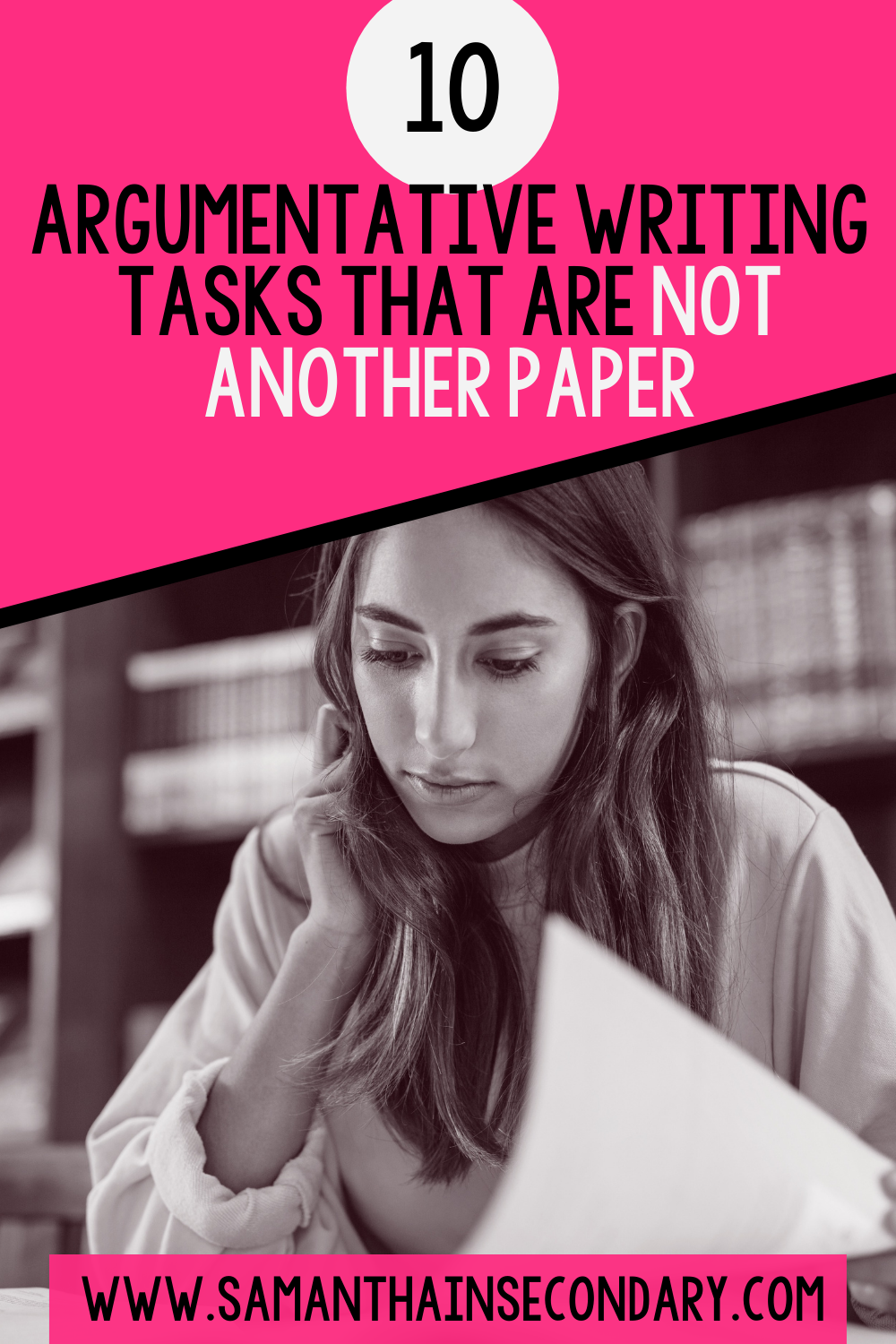
Reason One: Argumentative Writing Is a Genre, Not an Essay
What is it that you really want your students to get out of learning to write an argument?
The genre of argumentative writing can be broken down into these basics:
- The student investigates a topic.
- The student collects, generates, and evaluates the evidence.
- The student establishes a position in a concise manner.
But it doesn’t have to be a paper. If your assessment covers these basics, why not allow for some flexibility?
Reason Two: Your Students Could Use a Paper Break
When we assign papers, we often are not just looking for the content of the paper. We also grade for organization, fluency, spelling, punctuation, use of transition words, and a proper works cited page. Basically, we tend to grade for much more than just the content.
Some might say, “That’s just the way of English class.” But truthfully, this can be overwhelming for students. You might have heard the strategy to just grade for a few items off your rubric, but why not change the game entirely and let students work more creatively?
Reason Three: You Could Use a Paper Break
I’m always impressed when I see the work my students turn in, but I also like a little something different now and again. Giving my students creative options allows me a break from grading another essay with the same grading rubrics I’ve used over and over again. And I get to see a lot more insight into the way my students’ minds work and what they thrive in when I change up assessments.
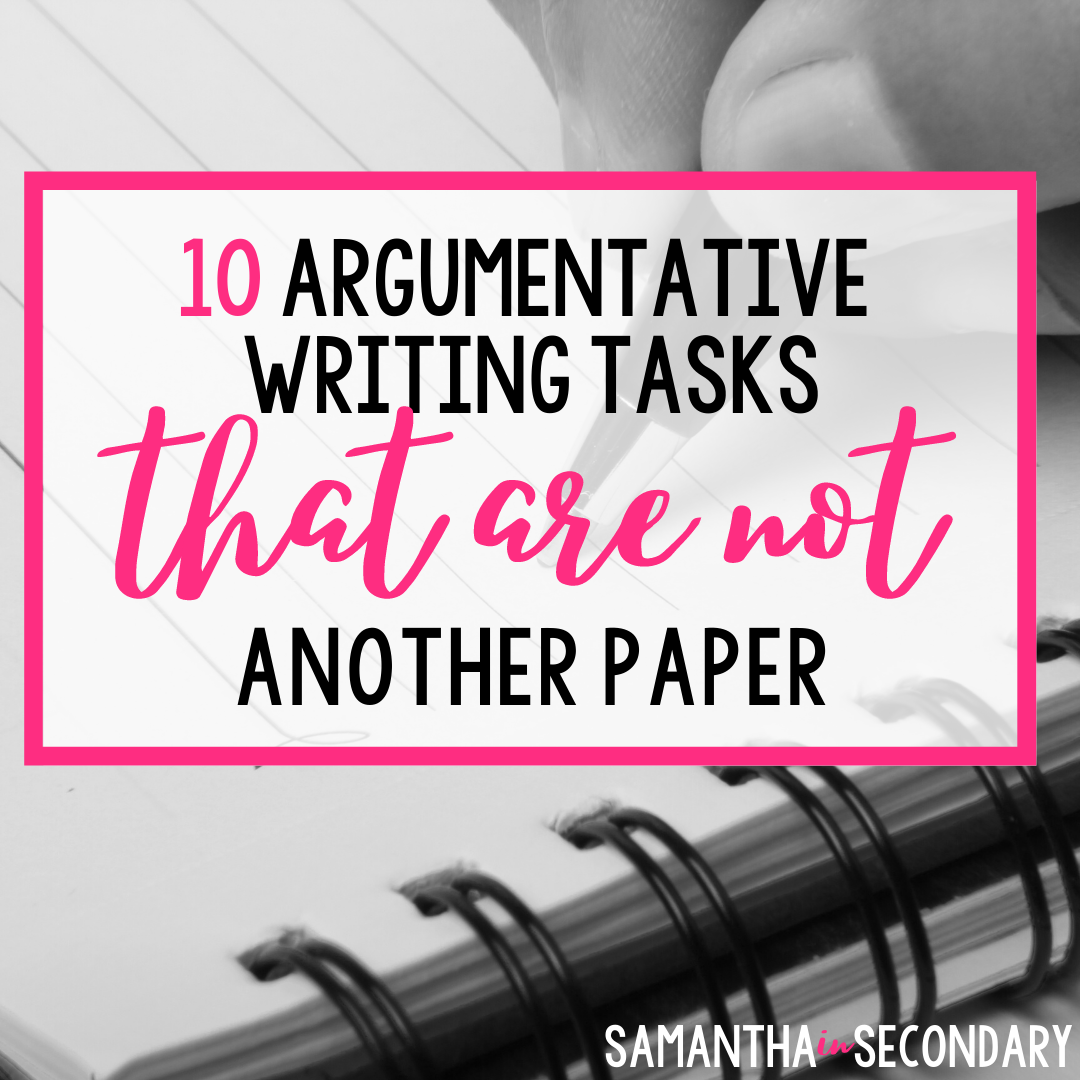
Here are 10 argumentative writing assessments that are NOT just another paper.
Have students write a letter to a stakeholder in the situation they are researching. This is a great way to demonstrate the impact of audience and purpose as well.
Some of your more literary students might love the challenge of arguing something in poetic form.
#3: Graphic Organizer
Sometimes all students need to understand the larger task at hand is to fill out a graphic organizer as if they were going to write a paper. This stops just short of writing the entire paper and allows students to go through the entire argumentative process while focusing on the big picture rather than the sometimes overwhelming task of crafting an entire paper.
#4: Public Service Announcement
Creating PSA’s is a great way to get your students engaged in the argumentative process.
Have your students create a poster with software like Canva or even Google Slides. This is a great way for students to share their information using a creative, 21st century medium.
#6: Podcast
Podcasts are an amazing way to enhance speaking and listening skills. What better way to have students share their arguments than by creating a podcast?
When crafting a blog, students can share what they’ve learned in an easy, relevant way.
Have your students preview examples before writing their own speech. A speech can be a powerful tool for students to hone their argumentative skills.
Many students love creating videos. You can have them create a basic video or challenge them to create a TikTok or Reel as if they were creating for social media.
#10: Infographic
Creating infographics is an intriguing way for students to transfer what they’ve learned to an eye-catching medium. Canva and Piktochart have great templates.
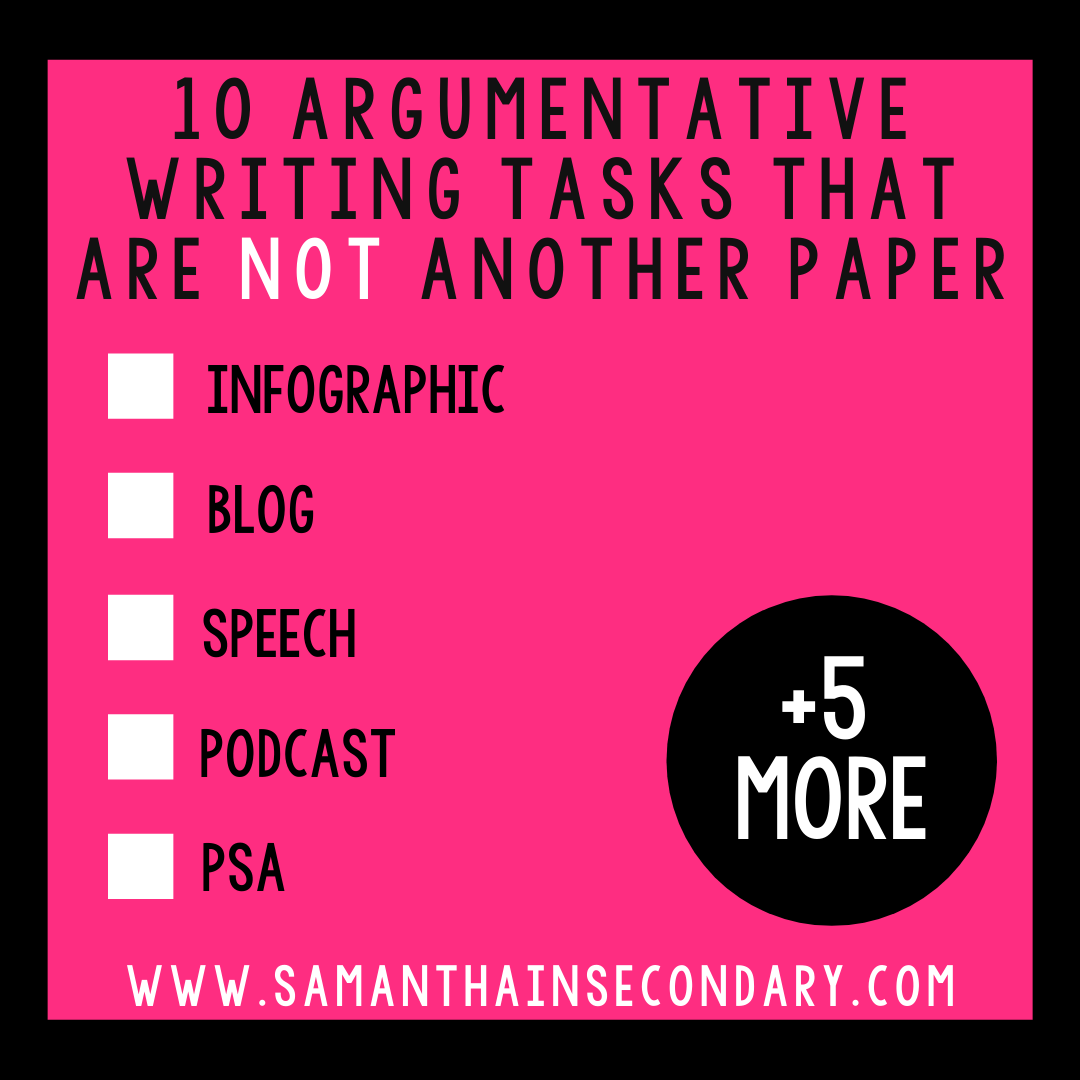
Get 50 Argumentative Writing Prompts!
Another thing I like to do is start each day in my argumentative unit with an interesting bell ringer. I’ve been using these argumentative writing prompts with a lot of success. Students love the variety and I love that they are practicing their skills every day!
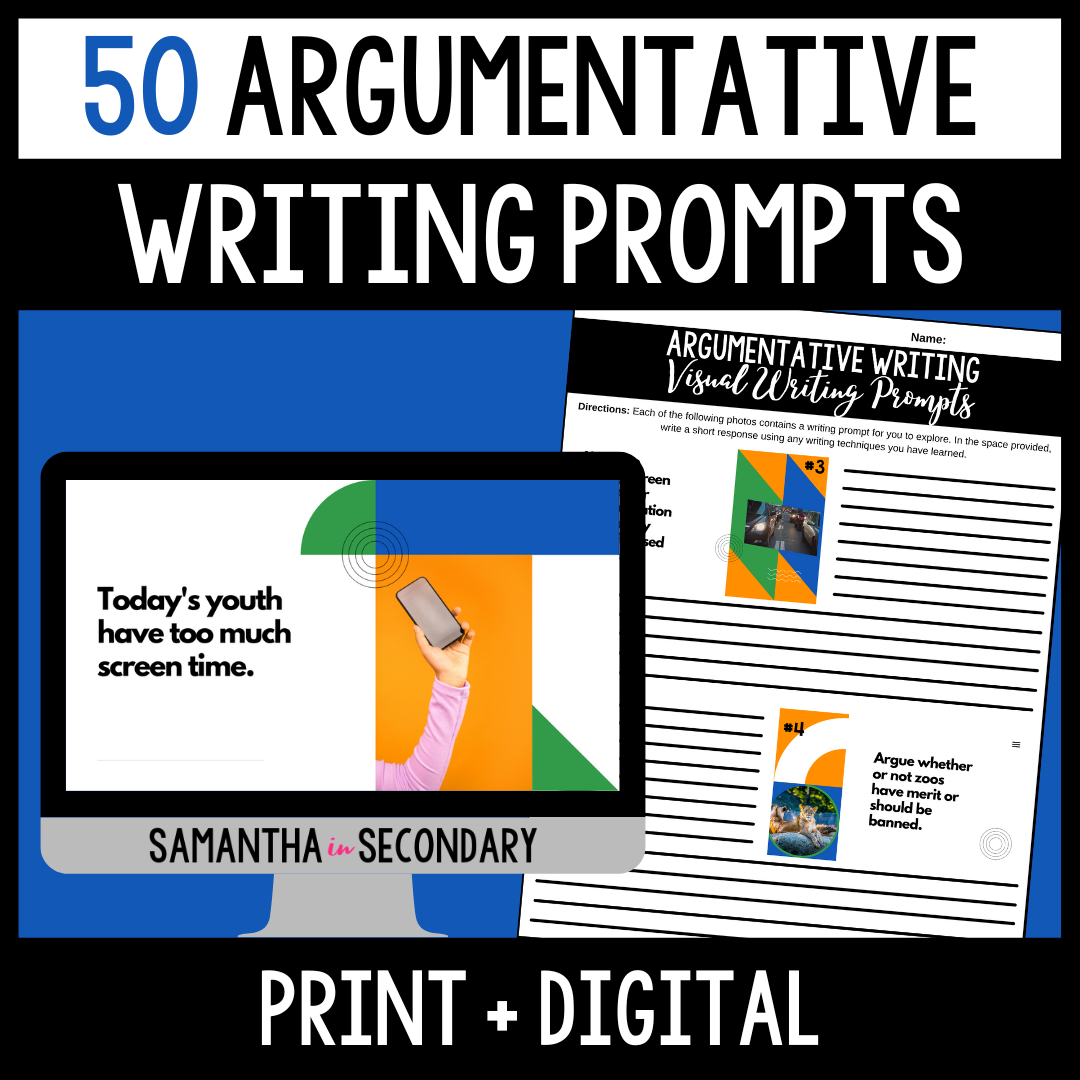
Have you tried any alternatives to an argumentative paper for your students? Let me know in the comments or continue the conversation with me over on IG and FB . I look forward to hearing what other ideas you love!
Happy teaching!

Subscribe to the newsletter to keep up to date on all things Samantha in Secondary.
argument writing activities
All Formats
Resource types, all resource types.
- Rating Count
- Price (Ascending)
- Price (Descending)
- Most Recent
Argument writing activities

Argument Writing Digital Escape Room Review Game Activity

Argument Writing that's Real-World Relevant: Activity Set

- Google Apps™
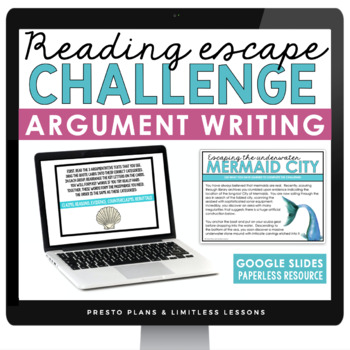
ARGUMENT WRITING DIGITAL ACTIVITY READING ESCAPE CHALLENGE
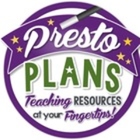
Identifying and Using Counter Arguments in Writing Mini Lesson and Activities

Argument Writing 101: PowerPoint, Cheat Sheet and Paired Activity Cards

Persuasive Argument Essay Writing Prompts with Rubric - Print and Easel Activity

- Easel Activity
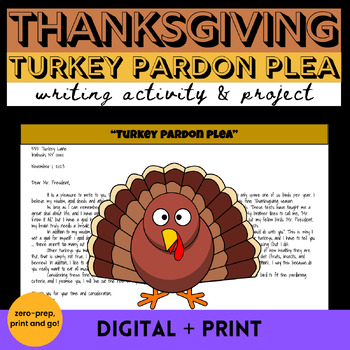
Thanksgiving Persuasive Writing Activity Pardon my Turkey Argument Writing
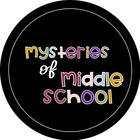
ARGUMENT WRITING ACTIVITY INTERACTIVE READING CHALLENGE ESCAPE
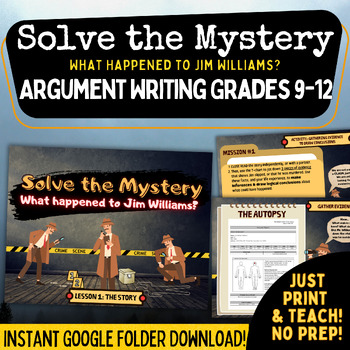
Solve the Mystery | Argument Writing Grades 9-12 | Fun Engaging ELA Activity

- Google Drive™ folder
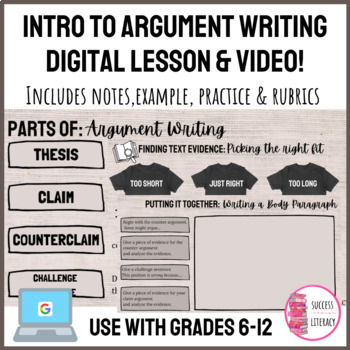
Digital Introduction to Argument Writing Lesson & Activity for High School
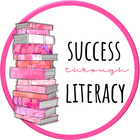
Toast or Roast Speech Writing Activity | AP Lang and Comp Argument & Rhetoric

Argument Writing Activities Bundle for AP Language and High School English

Argument Writing Activity - Banned and Challenged Books - Writing a Rationale
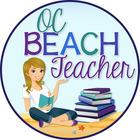
Argumentative Essay Peer Review Stations Activity Argument Writing Feedback
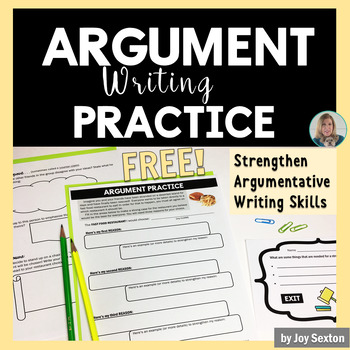
Argument Writing Practice Activity - FREE - Standards-Aligned

Why Are GMO's Not Safe: Reading / Writing Activities for Con Arguments

- Word Document File
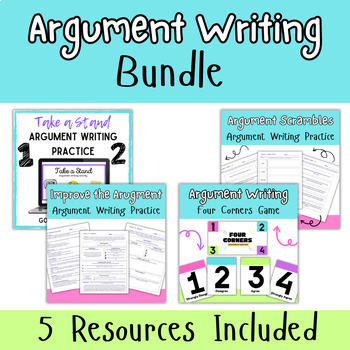
Middle School Argument Writing Bundle- 5 Activities Included-6th. 7th, 8th Grade
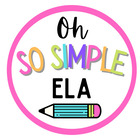
Middle School Argument Writing Essay Analysis activity , Peer/ Self Checklist

Argument Pre- Writing Activity - The Cube of Perspective
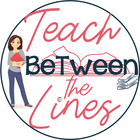
Opinion and Argument Writing Prompt Activities 50 MORE Prompts with Organizers

Argument Writing Vocabulary Activity -Frayer Model (list sold separately)

Unsolved Crime Investigation Activity - Writing Arguments and Inferences

Debate Argument Writing QR Code Task Cards Printable Digital Activity centers

- Internet Activities
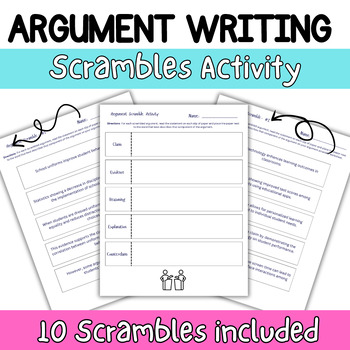
Argument Scrambles- 6th, 7th, 8th Grade Argument Writing Activity - 10 Included
- We're hiring
- Help & FAQ
- Privacy policy
- Student privacy
- Terms of service
- Tell us what you think
Buy ANY 3 Resources. Get the 4th FREE! 👉 SHOP NOW 👈
Making persuasive writing fun to teach and learn.
- April 21, 2021
How do you make persuasive writing fun in the classroom?
Lots of the time, teachers and students alike don’t enjoy writing lessons. It can be a challenge getting ALL students motivated to put pencil to paper.
That is where we step in to help you change that with these 5 fun strategies you can start using tomorrow to make persuasive writing enjoyable in your classroom.
We want to begin by saying, children love learning through games, and as teachers, we have witnessed the benefits.
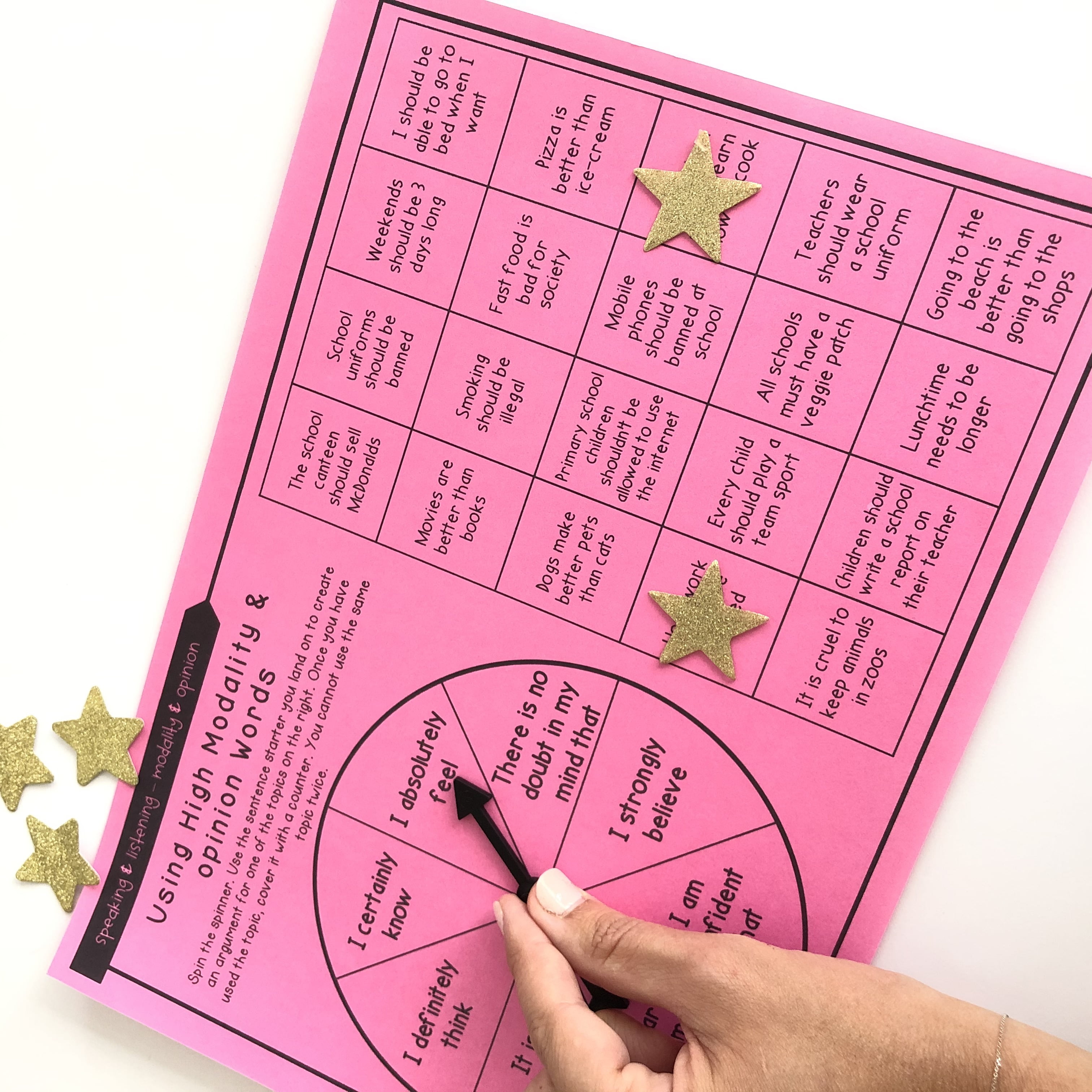
These tips include a range of games for individuals, pairs and, whole groups that will have your students excited when you tell them that writing is next up on the daily timetable.
1. Would you rather game
Build the field and get students talking with a Would You Rather game. Kids absolutely love playing this game, and it is an excellent way to get kids informally using persuasive language. An ‘Agree or Disagree’ game is another alternative you could play as a class (just make sure you include some funny or outrageous statements).
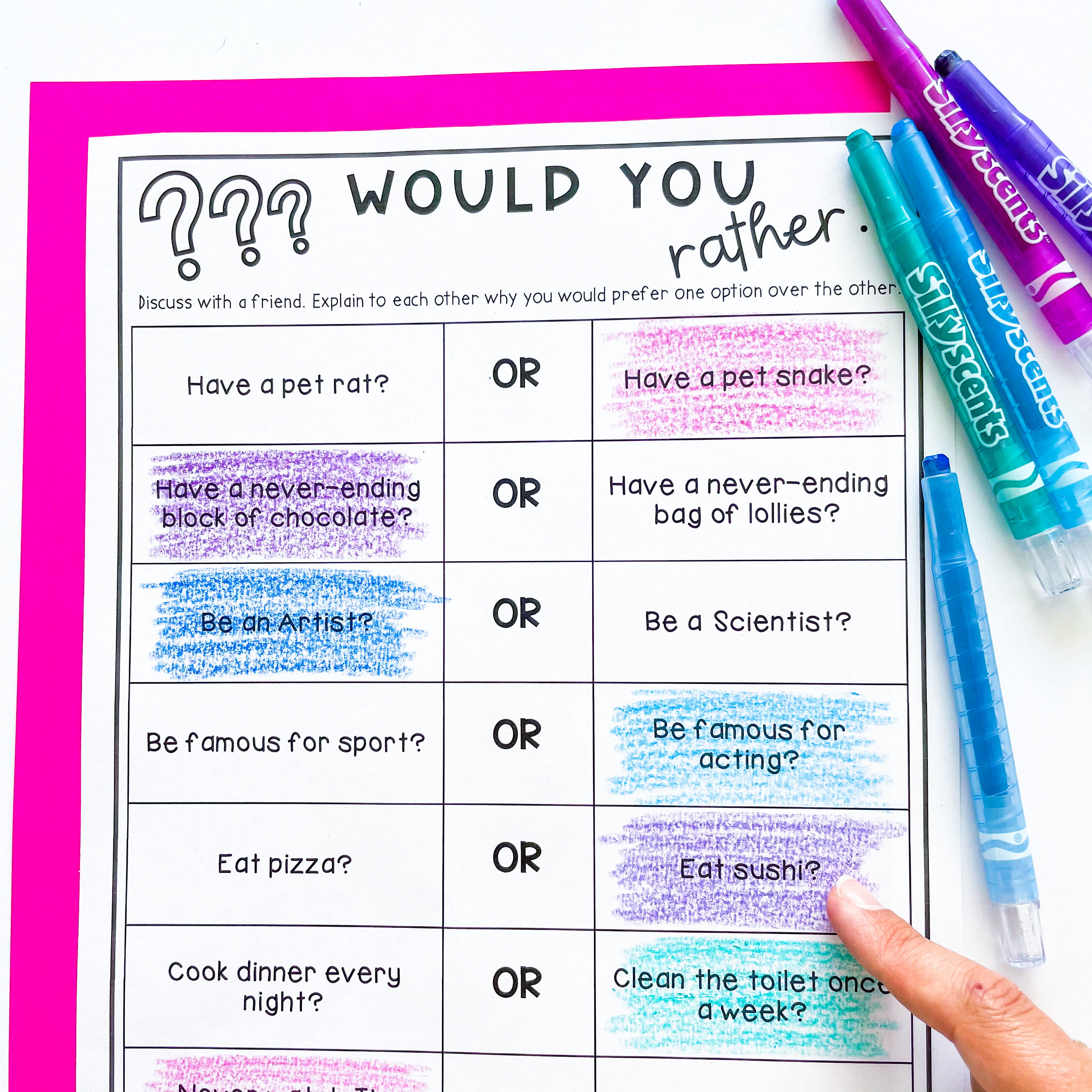
2. Spinner and dice games
We know that speaking and listening is vital when it comes to writing development. Spinner or dice games are an engaging and different way for students to work on specific language conventions and have fun at the same time. We like to set games up as fast finisher activities or send them home for students that need extra support.
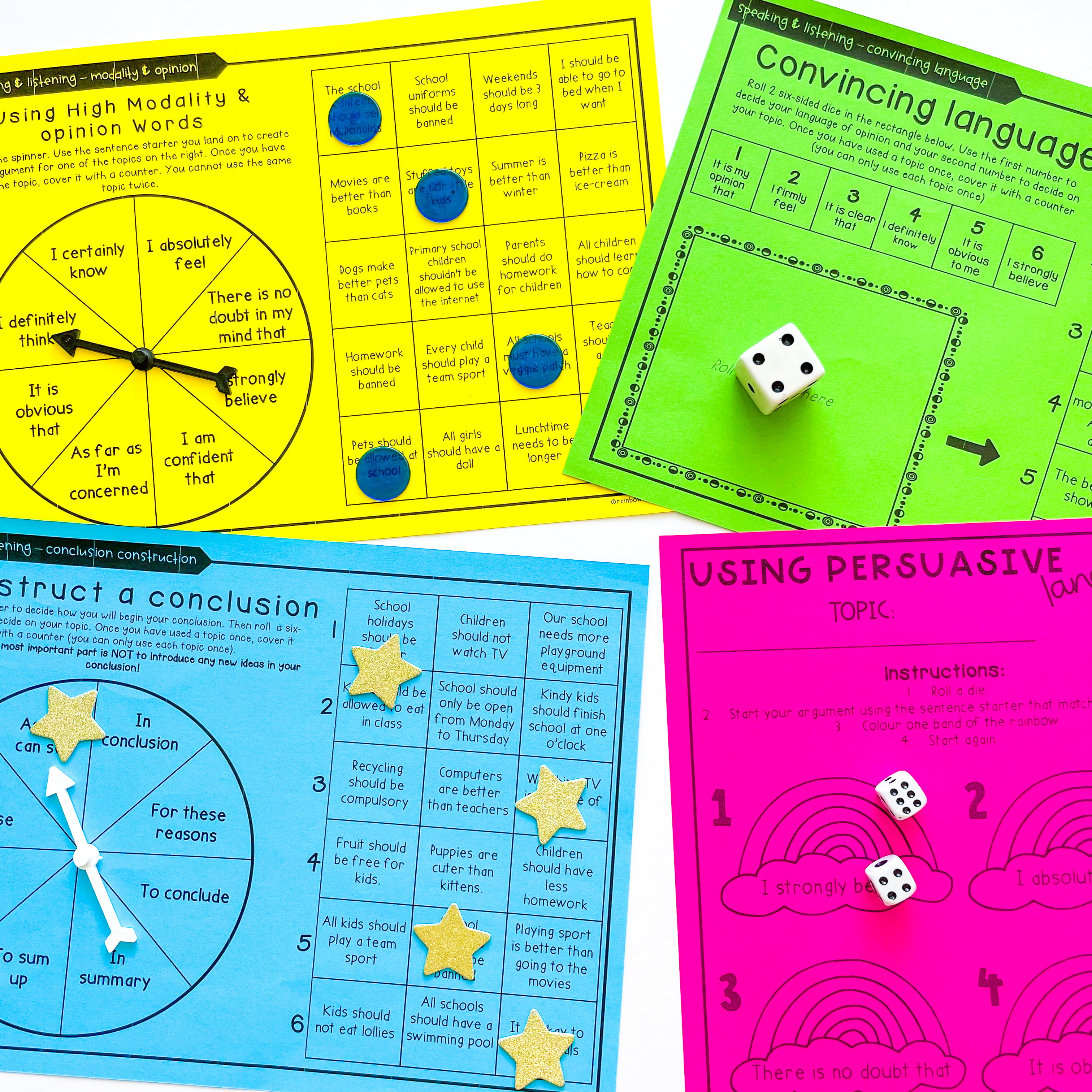
3. Word wheels
These are a great alternative to word or vocabulary walls. You could have students make their own word wheels to use as a reference when writing or simply speaking before writing. They can be less overwhelming for students by presenting multiple options one by one.
We have actually seen a creative teacher make large word wheels and pin them to her persuasive writing display. The students had the structure to refer to, examples, and could also access the word wheels on the wall if they needed help when writing.
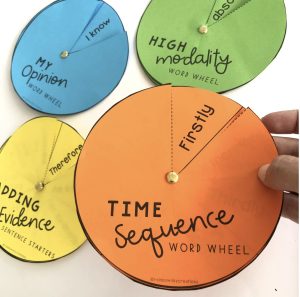
4. Partner writing
Don’t discount the learning opportunities that students obtain from working together on a piece of writing. Not only can they discuss and talk through their arguments but also mentor each other throughout the writing process. Peer or partner writing is another way to get reluctant writers engaged in the process.

5. Student choice and voice
Give students a bingo board or a range of topics for them to choose something they are passionate about or know about. As adults, we know it is easier to write about something we know, and kids are exactly the same. By giving students a choice it will allow them to feel confident in the content and, therefore, be able to focus more on the punctuation, language conventions, and spelling required of them when writing.
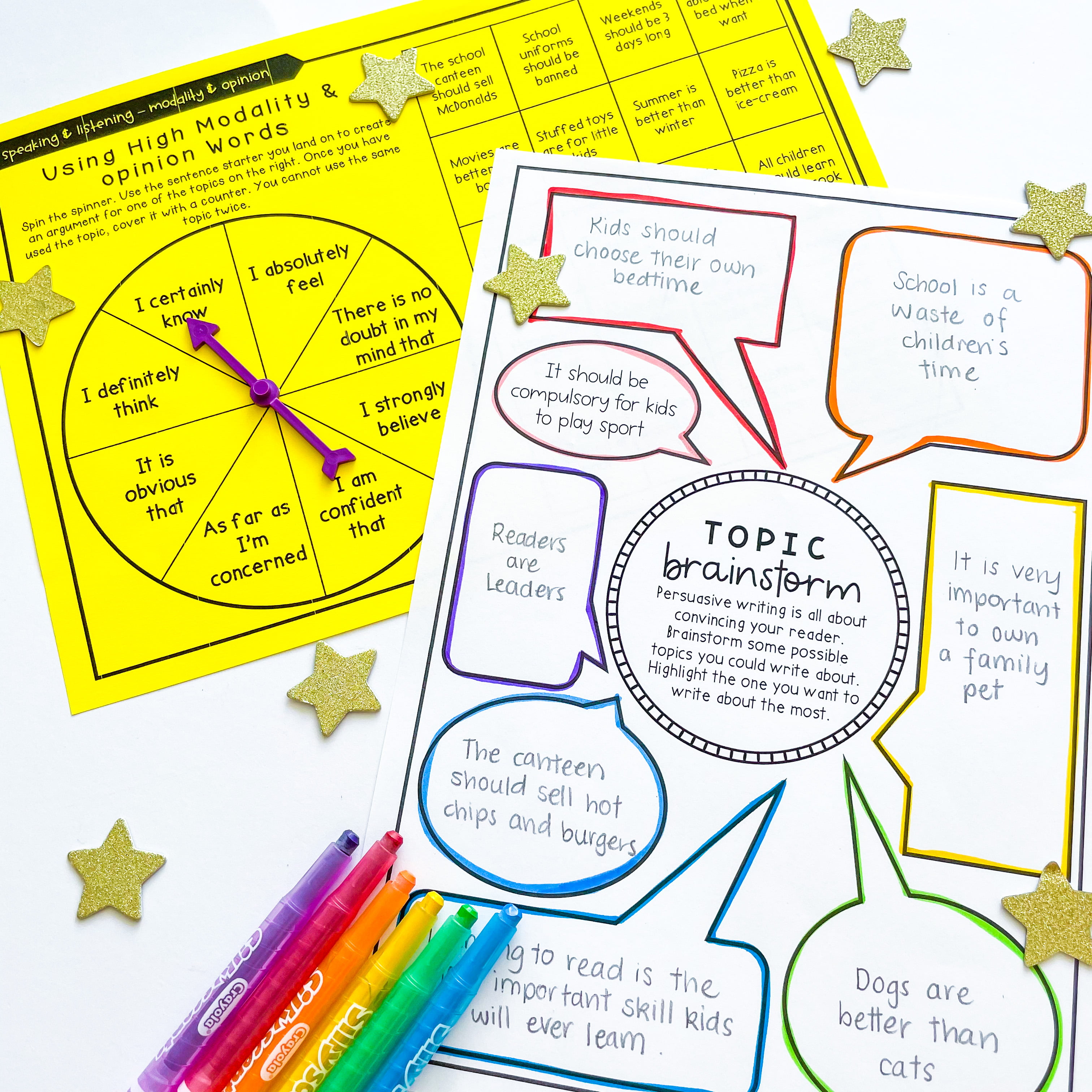
Create confident and enthusiastic writers with these persuasive writing activities and games. And remember, writing lessons don’t always require students to be sitting at a desk writing. Mix it up and make it fun!
Loved these ideas and want to remember them later? Pin the image below.
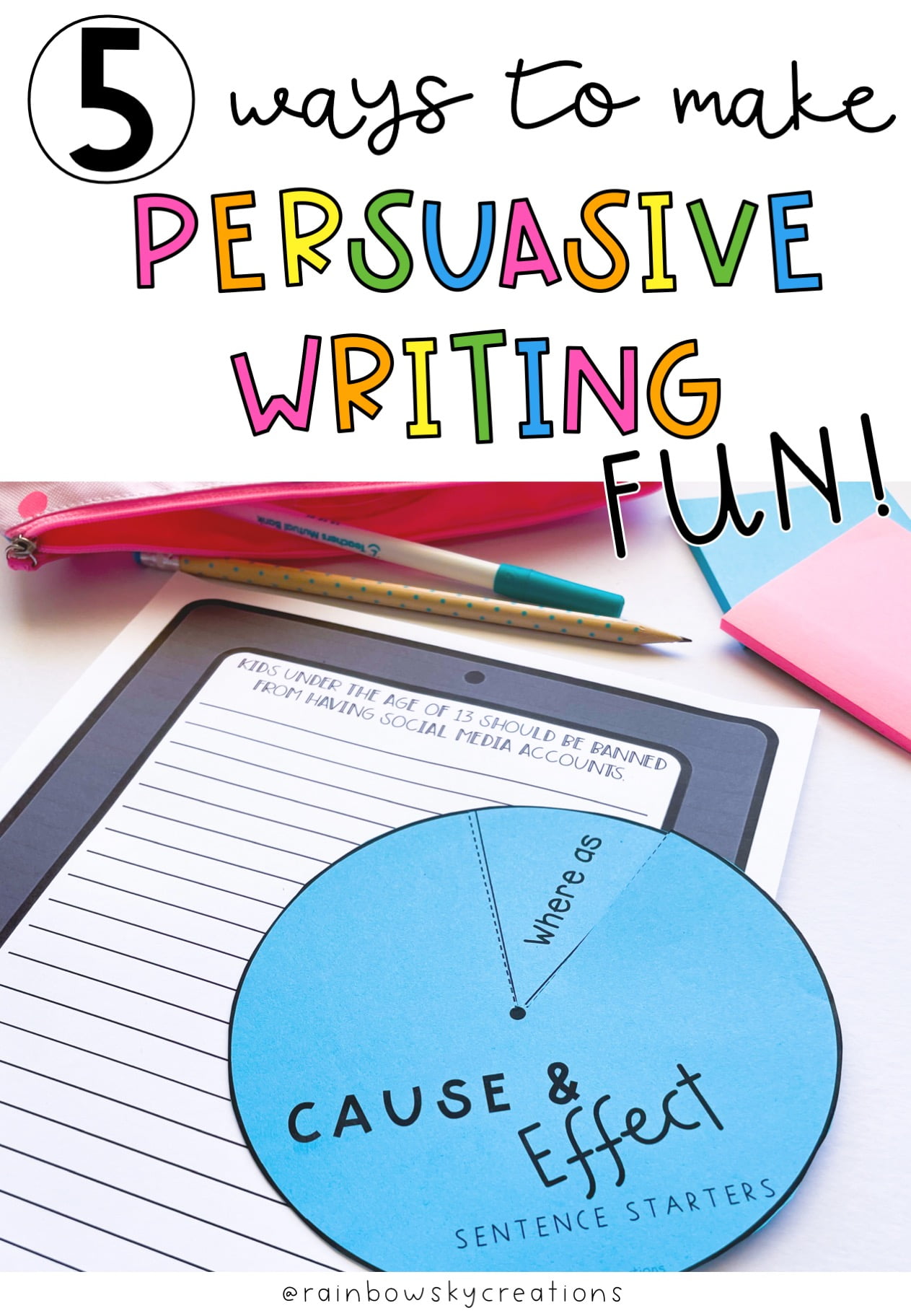
Need help when it comes to planning and preparing your persuasive writing lessons? Check out our ready-to-print resources for Grades 2-3 & Grades 4-6.
“Fabulous addition to a unit we’ve taught many times before. This resource brought new perspectives & tasks to help revamp what we do.” Kristy T

WHAT IF YOU COULD MASTER SETTING UP AND RUNNING YOUR READING GROUPS IN JUST ONE WEEK?
Imagine running a reading group program which is uncomplicated, easy to implement and stress free. .., introducing…, transform your reading groups.
- Discover a streamlined system to take control of your reading groups.
- Learn our step-by-step instructions.
- Create a time in the day you and your students love.
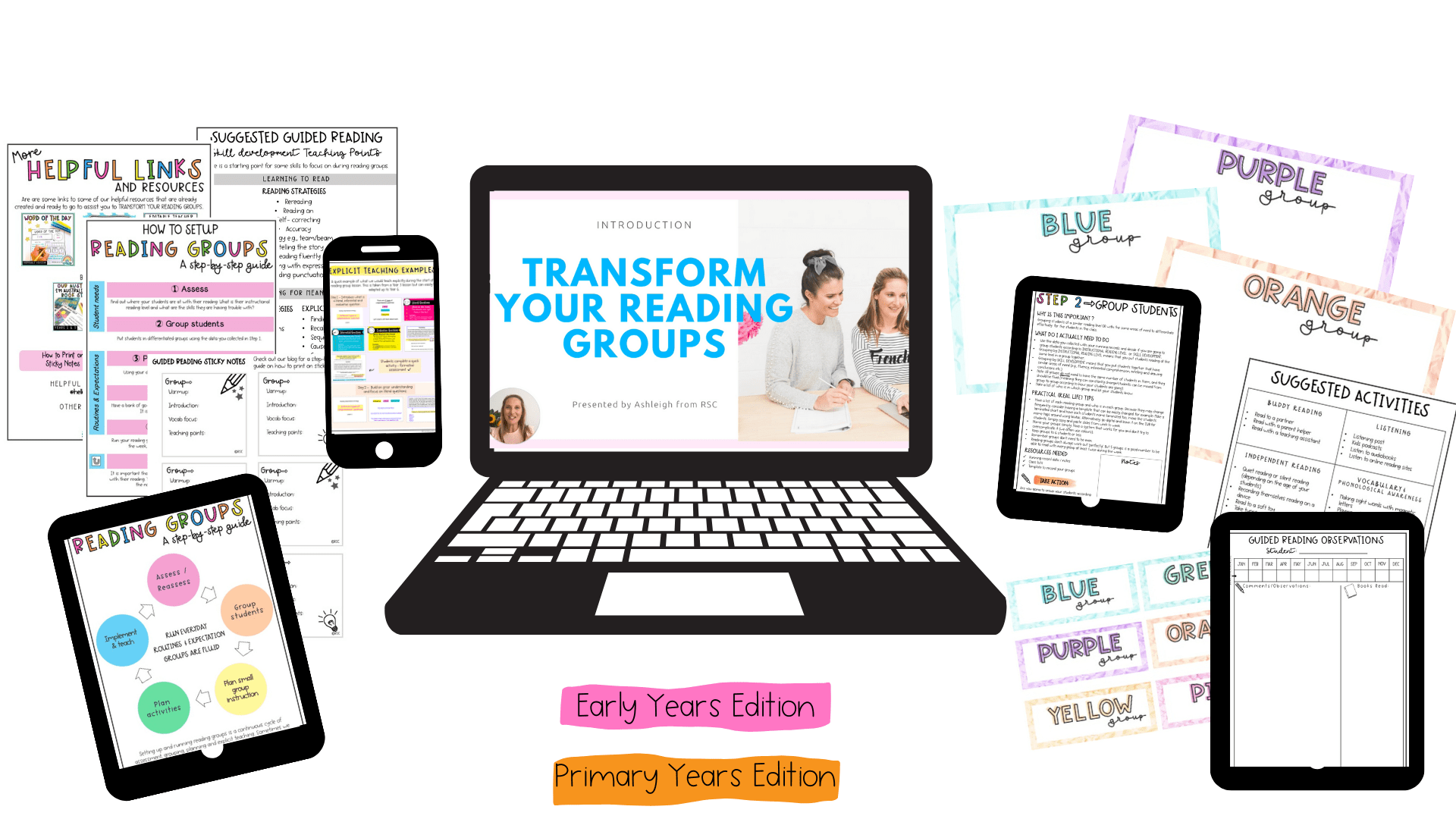
Click here to join us and TRANSFORM YOUR READING GROUPS.
What to read next:.
Ways to emotionally prepare your students for NAPLAN
8 Tips for Efficiently Running Reading Groups
Time Saving Strategies for Teachers

share this post
Planning for a possible school closure, 7 fun and easy back to school activities, 6 creative end of the year classroom management strategies, 5 ways to bring kindness into the classroom, member logins.
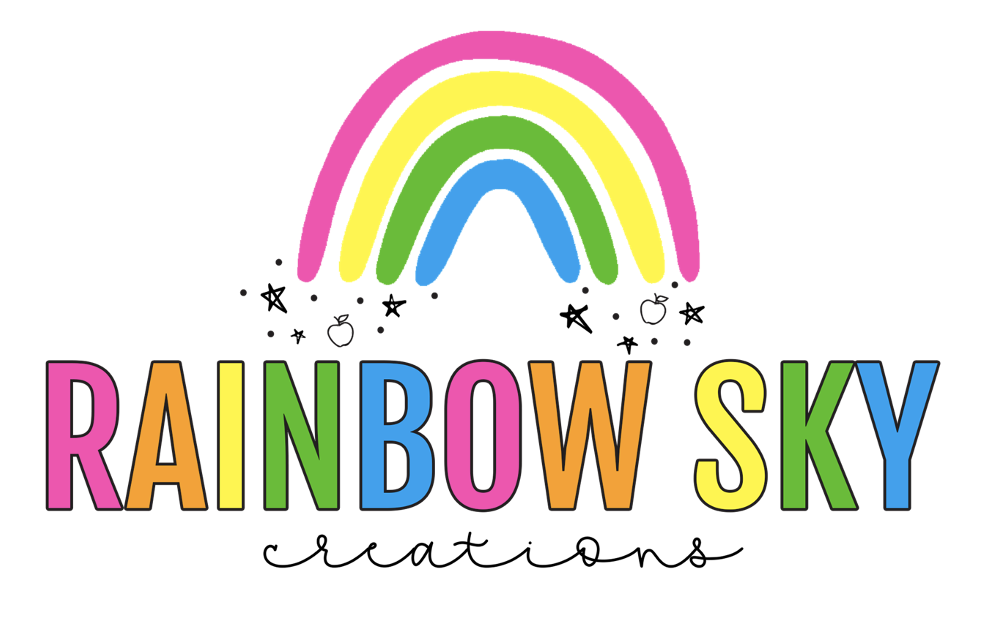
Rainbow Sky Creations acknowledges the Dharawal people and Whadjuk Nyungar people, the traditional custodians of the lands on which they live, work and learn. They pay their respects to the past, present and emerging Elders of this nation, and supports the cultural, spiritual and educational practices of First Nations peoples.
- Privacy Policy
- Terms & Conditions
- Site Maintained by Nyssa
Let's hear from you! Text us!
What is the best way to teach reading? Today, literacy specialist Malia Hollowell talks to us about best literacy practise.
Malia firmly believes that you don’t need to be a reading specialist to be an exceptional reading teacher. In this episode, she shares tools and strategies that will help all teachers (and therefore students) achieve success.
During our chat, we talk about:
- Why is the Science of Reading something teachers need to be paying attention to
- How SOR doesn’t mean we need to throw everything away and start fresh – it is all about the tweaks!
- Small changes teachers can make to make their literacy instruction more SOR aligned
- What reading lessons look like in classrooms from Kindergarten all the way through to Grade 6.
We also touch on some of the literacy trends as well as things teachers have been doing for decades and ask Malia if we need to keep them or ditch them all together!
This is a fun episode that will provide you with inspiration, confidence and best practice strategies when teaching reading.
Before you head off, please share this episode with another teacher because sharing is caring!
Rainbows ahead,
Ashleigh and Alisha
Resources mentioned in this episode
Connect with Malia on Instagram
Sound Mapping Freebie
Grab the Science of Reading Quickstart Bundle
Get a copy of our FREE guide: How to Efficiently Run Reading Groups
APPLE PODCAST | SPOTIFY | GOOGLE PODCASTS


Teaching Argumentative Writing Tips and Tricks
by Gordana S | Dec 12, 2020 | Skills & Career | 0 comments

Table of Contents
Teaching Argumentative Writing—Skills and Strategies
High school students need to possess strong writing skills and learn various writing strategies to be successful in college and the career of their choice . They have to be able to argue opinions, present viewpoints, and comment on events or phenomena using clear and effective language. It is a teacher’s job to identify which types of writing skills their students need to master to create persuasive argumentative texts.
Your students will need to practice critical writing to be able to do college essays and compose other types of argumentative and persuasive writing . School assignments and academic success aren’t the only reason why reading and writing skills are important for your students. Above all else, honing those skills in adolescence teaches your students to think for themselves, helps them determine what career path they want to take, and makes them more successful on that path.
Let’s take a look at what skills and strategies your students need to master argumentative writing and what activities you can implement in the classroom to help them become better writers and thinkers.

Credit: Mike Tinnion
Argumentative Writing—Definition and Characteristics
Argumentative writing is an essay or research paper that aims to comment on events, ideas, or phenomena. The author takes a stand and argues a point, supporting it by thorough theoretical and empirical research and conclusive evidence that backs up their claims.
An argumentative essay has some similarities to an expository essay , which is why the terms are often used interchangeably even though, in reality, they are two different genres of writing.
Here are some key differences between the two:
Characteristics of Argumentative Essays

Credit: Dan Dimmock
Argumentative writing follows a specific structure. Your students need to learn it and use it in their essays.
The structural parts of an argumentative paper, whether it’s a shorter or longer work, are:
- Introduction
- Body paragraphs
A crucial characteristic of argumentative writing is the transition from one paragraph to the next. The points made need to be clearly connected and interrelated for the essay to make sense and argue a point successfully.
Other important aspects are the clarity of the evidence presented and the persuasiveness the author employs to convince the reader their point is valid. Your students can learn how to do this efficiently if you teach them the skills needed to write argumentative essays.
Argumentative Writing Skills
Extensive knowledge of vocabulary and sentence constructions is integral for argumentative writing. This form of writing also requires solid:
- Reading skills
- Research skills
- Cognitive abilities
- Argumentative skills
Reading Skills
Argumentative writing is a response to another person’s essay, a societal issue, or a world phenomenon. For your students to write argumentatively, they need to research the topic well by reading about it extensively. For this reason, you need to equip your students with various reading comprehension strategies that make a substantial part of the prewriting process. Feel free to use fun ways to teach your students reading before you make them work on their writing skills as the two are inevitably interconnected.
Your students will also benefit from learning critical reading because it will:
- Improve their vocabulary
- Show them different writing strategies they can employ
- Give them ideas to use in their work
- Help them develop research and cognitive skills
Research Skills
Using supporting evidence is an inseparable part of argumentative writing. You should teach your students to research their topics properly before they start writing argumentative essays. This means that they should be able to locate the relevant material for their topic, compare and contrast the gathered sources, and determine which ones they will use in their essays.
Some students may struggle with research and fail to find the sources for the topic they need to cover. One reason for this is that they use the wrong keywords in their search. Another is that they waste hours on end going over the sources that are irrelevant for their purposes or they don’t even end up using.
You need to teach your students how to do research regularly and conscientiously so that they can avoid those traps. Ultimately, they should spend more time writing than digging for information.
Cognitive Abilities
To do research and write effortlessly, your students need to possess many cognitive skills, including:
- Language usage
- Problem-solving
Cognitive abilities play a significant role in the prewriting process and beyond. Your students need to be able to evaluate the evidence they have gathered through research, weigh the pros and cons of an issue, and present their point of view convincingly. Training your students to sharpen their memory, broaden their attention spans, and use problem-solving skills is instrumental for teaching them how to write a quality argumentative text.
Argumentative Skills
It’s not a surprise that your students need a set of argumentative skills to write successful argumentative texts. Many of the already mentioned skills fall under this category, like:
- Critical thinking
- Evaluating sources
- Taking a stand
A crucial aspect of argumentation is persuasion. Your students need to use it to convince their audience that the argument they’re presenting in their writing is the correct one. This is done through careful use of language, a successful rebuttal of the opposing argument, and enough implementation of credible evidence to support the main point.
Argumentative Writing Strategies

Credit: Kelly Sikkema
You should teach your students how to approach any genre of writing—from descriptive to persuasive—if you want them to write stellar essays. Here are the strategies you should teach your students to employ when they write argumentative essays:
- Choosing the side of an issue
- Presenting and refuting the opposing view
- Outlining the essay
- Connecting ideas
- Using linking words
- Reviewing their work
Where Do You Stand?
A prerequisite for argumentative writing is taking a stand. This is a strategy you can teach your students through various activities. A good idea is to have a classroom debate on a specific topic and to let your students present opposing views on it and decide which they would rather side with.
You should also teach them what opening statements are and how to compose them. The first sentence of their essay should explain the topic broadly, but it should also be catchy enough to grab the reader’s attention.
Don’t Ignore the Other Side
Your students’ argumentative essays will be more persuasive if they include an opposing viewpoint and refute it efficiently. Counter arguments are often an obligatory part of an argumentative essay assignment.
Maybe your students are writing a paper that has only two or three body paragraphs. If so, tell them to introduce the opposing argument in the first one and rebut it in the following paragraphs in which they’ll argue their case.
Organization in Writing
Creating an outline is an unavoidable part of any longer written piece. Even if your students are writing an argumentative essay of no more than 350 words, they should approach it with a plan in mind. Putting such a plan to paper, i.e., creating an outline, will not only help your students write a well organized final draft but also teach them how to:
- Structure their essays properly
- Contrast and compare ideas and evidence
- Refer to the sources in adequate parts of the essay
Connecting Ideas
A conclusion is often seen as a paraphrase of the introductory paragraph. You have to teach your students that this isn’t true. Even though they should restate the main idea in the conclusion, they shouldn’t only paraphrase their thesis statement and stop there.
Teach your students how to connect and summarize all the ideas from the essay in their conclusion. Their concluding paragraph should emphasize the main points, the evidence presented, and the call for the reader to side with the argument defended.
Transitions Are Key
What will help your students express their argument efficiently and connect the ideas from various parts of their essay into a unified piece of writing is linking words. Though they are often considered overused, if your students are just beginning to write argumentation, transition words will help them drive the point home in their essay. They will also make it easier for the reader to understand the ideas expressed in the text.
Appreciating Feedback
Another important strategy for any writing is getting feedback and revising the text according to it. You should give your students feedback on their outlines, opening statements, individual paragraphs, and the entire essays when they’re done. You can also implement peer-reviews and aid your students in learning from each other’s work.
Activities for Teaching Argumentative Writing in High School

Credit: fotografierende
Your students need to know the skills and strategies that go into writing argumentative essays. Once they do, what will help them acquire those skills is regular practice.
Here are some ideas for classroom activities that you can assign to help your students hone their argumentative writing skills:
- The missing linking phrases
- Different opening statements
- Argumentative essay examples
- Peer reviews
- Argumentative presentation
Adding The Missing Linking Words
You will give a lesson on the structure of argumentative essays before you ask your students to write them. While you’re at it, you have to teach them linking phrases and the purpose they serve.
You can give your students a list of the linking phrases with explanations of what they’re used for—for example, yet and however are both used for comparison. When your students have studied the list, give them an essay from which you have previously removed all linking phrases and ask them to supply the most appropriate linker in the blanks. Their answers don’t need to match the original transition words, but they do need to choose the ones that fit in with the context of the text logically and complement it.
The purpose of this exercise is to make your students:
- Learn linking words and when they are used
- See how devoid of clarity an essay can be without them
- Realize the importance of effective transitions in an essay
Coming Up With Another Hook
Authors use intriguing opening sentences to hook readers to their work. The primary purpose of any piece of writing is to get the audience interested in it and read it to the end.
Here are some ways in which your students could start an argumentative essay:
- Contrasting statements
- Question and answer
Find the examples of each of these methods in an essay introduction and give them to your students to study. You can then assign them a topic and a specific method to try out on their own.
Studying Other Argumentative Essays
When you introduce argumentative writing to your students, give them time to analyze the new form by studying example essays before they start writing their own. Many websites offer examples of argumentative writing for free, so you are bound to stumble upon different essay samples you can use in the classroom.
While your students are analyzing other people’s essays, ask them to identify the structural parts you had previously taught them. They can also fact-check the arguments the authors made to support their claims. They’ll get more engaged with the text and hone their critical thinking and research skills along the way. They should discuss how effective the argumentative essay they’re reading is, i.e., whether the author managed to prove their point and convince the reader.
Reviewing Peer Assignments
While you should provide thorough feedback on your students’ work, you can also delegate that duty to them every once in a while. Peer review will certainly be a fun activity for them. They can help each other reflect on their progress and improve together. To give them some direction, tell your students they have to answer these four questions about their classmates’ essays:
- Whether the introduction is sufficiently intriguing to make the audience keep reading
- How much evidence the author uses to prove a point
- Whether the conclusion is inviting the reader to side with the author’s view
- How well the author employed the transition techniques
Another fun spin on the peer review method is instructing your students to create an outline for the essay they’re reading. This is called backward outlining, and it helps your students identify the key parts of the finished text.
Oral Argumentation
When you are teaching students argumentative writing, you aren’t only doing it to help them write better papers but to help them improve their overall argumentative and reasoning skills. They will need those skills to be more confident, employ their logical thinking abilities, and use their voice and agency in every aspect of their life.
An excellent activity to demonstrate to your students that they need argumentative skills for more than writing an amazing essay is a presentation debate task. Teach your students all they need to prepare and execute a speech (like how to start a speech in a school competition ), assign them some thought-provoking topics, and have them sharpen their argumentation skills orally through debate.
Scribbling Down Ideas as They Come
A standardized argumentative essay outline is a clear, linear plan for what the essay will look like, which is likely to demotivate your students from the get-go.
Brainstorming is an interesting and unexpected activity that teaches your students to love the messiness of the writing process. Before they put their ideas into an outline, they should draw a mind map of everything that pops into their head and put those ideas on paper. They are bound to get creative and practice the different skills of the prewriting process at the same time.
How To Teach Argumentative Writing—What Do You Say?
If you feel we have neglected to mention some of the most fun ways to teach argumentative writing to high school students, why not offer some ideas of your own?
We believe it’s time we all worked together to bring innovations in schools so that our students are equipped with the tools they need to prepare for the future of work in America.
If you agree with us or feel there are points about teaching argumentative writing that were left unsaid—write to us. Your words will find their place on our blog.
Submit a Comment Cancel reply
Your email address will not be published. Required fields are marked *
Save my name, email, and website in this browser for the next time I comment.
Recent Posts
- How to become a writer after high school
- Effective Stress Management Activities for Teenagers
- Teaching Persuasive Writing in a Fun Way
- The Importance of Financial Literacy for High School Students
- Career Assessment for High School Students

IMAGES
VIDEO
COMMENTS
There are many engaging activities to use when teaching argumentation and persuasion beyond the classic essay. While the argumentative essay can certainly be effective, try something new with one of these 6 engaging activities. Your students will be excited and eager to apply argumentation and persuasion in the classroom and beyond.
Though I was desperate to get into my classroom, I, rather begrudgingly, attended one of the mandatory sessions. This session was on "Gaming in the Classroom: Increasing Student Engagement". ... The Writing Process, Writing Mini-lessons Guest User January 23, 2018 Argument Writing, The Argument Essay, Argument Activities, Practicing ...
Persuasion Map: Students can use this online interactive tool to map out an argument for their persuasive essay.: Persuasive Strategy Presentation: This handy PowerPoint presentation helps students master the definition of each strategy used in persuasive writing.: Check the Strategies: Students can apply what they know about persuasive writing strategies by evaluating a persuasive piece and ...
The Persuasion Map is an interactive graphic organizer that enables students to map out their arguments for a persuasive essay or debate. Students begin by determining their goal or thesis. They then identify three reasons to support their argument, and three facts or examples to validate each reason. The map graphic in the upper right-hand ...
Here are Melissa's simple steps for using this debate-style discussion strategy in your classroom: Give students a thought-provoking or humorous prompt. Play music as students think, research, jot notes, and (if possible) walk around the room. Stop the music and have students get into groups of two or three.
4. Identify claims and evidence. Related Article Tim Lahan. The Common Core Standards put argument front and center in American education, and even young readers are now expected to be able to ...
In " 10 Ways to Teach Argument-Writing With The New York Times ," you'll find resources for: Exploring the role of a newspaper opinion section. Understanding the difference between fact and ...
Extending: Adding commentary to the conversation on the issue at hand. Countering: Addressing opposing arguments with valid solutions. Teaching students to identify these moves in writing is an effective way to improve reading comprehension, especially of nonfiction articles. Furthermore, teaching students to use these moves in their own ...
Identifying Warrants or Assumptions. This activity is designed for students to work through the warrants and assumptions they may have for their arguments and identify possible gaps at the early stage of the research process. They can use this activity to consolidate the research process and locate useful sources and materials to formulate a ...
If you're a writing teacher in grades 7-12 and you'd like a classroom-ready unit like the one described above, including mini-lessons, sample essays, and a library of high-interest online articles to use for gathering evidence, take a look at my Argumentative Writing unit. Just click on the image below and you'll be taken to a page where you can read more and see a detailed preview of ...
Table of Contents. Persuasive Writing Lesson Plan 1: Identify the Key Features of Adverts. Persuasive Writing Lesson Plan 2: Analyze an Advert. Persuasive Writing Lesson Plan 3: Plan an Advertisement. Persuasive Writing Lesson Plan 4: Create the Advertisement. Persuasive Writing Lesson Plan 5: Further Practice in the Art of Persuasion.
Plus, pick up this Free Resourcefrom Bespoke ELA. Devil's Advocate. One way to practice argumentation skills is through a game called "I Couldn't Disagree More. " In this game, students play the devil's advocate and disagree with debatable thematic claims. In this game, students draw a thematic claim such as "Ambition leads to ...
Argumentative Essay Practice activities & prompts for: claims, supporting arguments, counter-arguments, & refutations. Brainstorming: what's your opinion about ... Reviewing the counter-argument paragraph Some people believe that cell-phones distract students in class and teachers can't control what they are working on. However, teachers ...
The game is easy to play and extremely flexible. You can choose from 20 possible problems and can fine tune the activity according to the needs of your students. The pack comes with ideas you can implement to modify the game in various manners. ARGUETROPIA aids in cognitive and argumentative development in students.
Argument Writing Activity 1: Teach the Teacher. I love when students write about "niche" concepts in their Q3 argument essays. I find it more interesting and more convincing than some of the more "obvious" topics. However, I've noticed that students need to practice writing about topics of interest. For one, they need to be able to ...
Warm-Up for Argument Writing Not all arguments are created equal. Some involve people screaming at each other and throwing chairs. Others involve people rationally and logically analyzing an issue in order to come to an effective conclusion. When you write an argument essay, you need to do the latter, not the former. Tantrums only convince readers that you are a child.
In just a couple of days, I went from a loud, bustling classroom full of energetic 10th graders to an eerily quiet Zoom call full of black boxes and muted mics. Hearing and seeing my students became a thing of the past. When I began to notice my students struggling to understand argumentative writing, I knew I had to get creative.
September 13, 2021 by Samantha H. When it comes to teaching argumentative writing, there are so many ways to allow students to demonstrate what they have learned. You absolutely do not need to write a full paper each time you're teaching a specific skill. Consider alternative tasks to a paper such as letters, video, speeches, etc.
This is a sample for my argumentative writing unit and bundle!This mentor text activity is perfect for modeling argumentative essays! It is also great practice for students to identify the parts of an argument essay!Included:Mentor Text: "The Dangers of Trash in the Ocean"Graphic organizer/handout to go with the text--students identify the parts of the text (claim, reasons, evidence ...
An entire mini lesson & activity to actively practice using the revision process of a 3 paragraph, argument essay with an introduction, body and conclusion. This lesson includes: 1. Set up and directions for teachers to implement this mini lesson into a lesson plan (includes directions, duration, and how to use the accompanying worksheets) 2.
Peer or partner writing is another way to get reluctant writers engaged in the process. 5. Student choice and voice. Give students a bingo board or a range of topics for them to choose something they are passionate about or know about. As adults, we know it is easier to write about something we know, and kids are exactly the same.
Argumentative Writing—Definition and Characteristics. Argumentative writing is an essay or research paper that aims to comment on events, ideas, or phenomena. The author takes a stand and argues a point, supporting it by thorough theoretical and empirical research and conclusive evidence that backs up their claims.
She has extensive experience creating & teaching curricula in college level education, history, English, business and marketing. Argumentative essays are a way for students to analyze the pros and ...